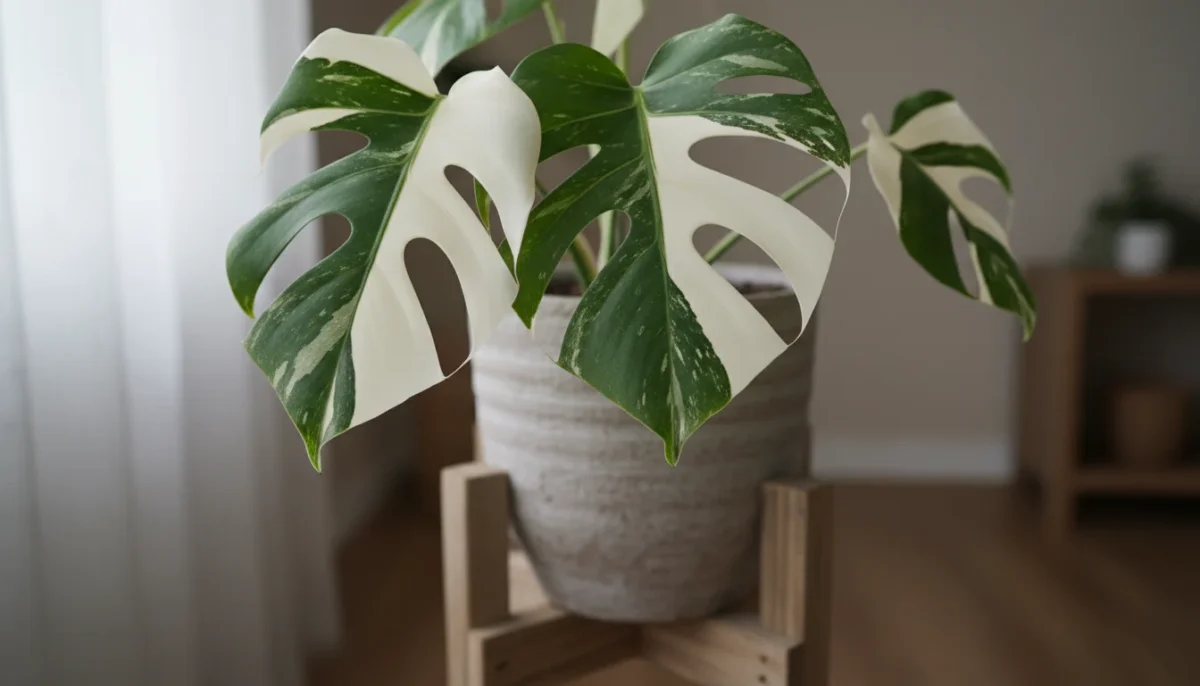Stepping into the world of rare houseplants opens up a fascinating dimension of gardening, even within your compact living space. You discover unique foliage, striking patterns, and the thrill of nurturing something truly special. This journey is immensely rewarding, offering a deeper connection to the botanical world. However, collecting rare and exotic indoor plants requires a thoughtful approach, balancing their specific needs with your environment and ensuring you contribute to sustainable practices.
This guide prepares you for the exciting challenge of acquiring and caring for these botanical treasures. You will learn how to identify true rarity, source plants responsibly, and provide the precise care that allows your unique collection to flourish. Prepare to transform your home into a verdant sanctuary of exceptional beauty.
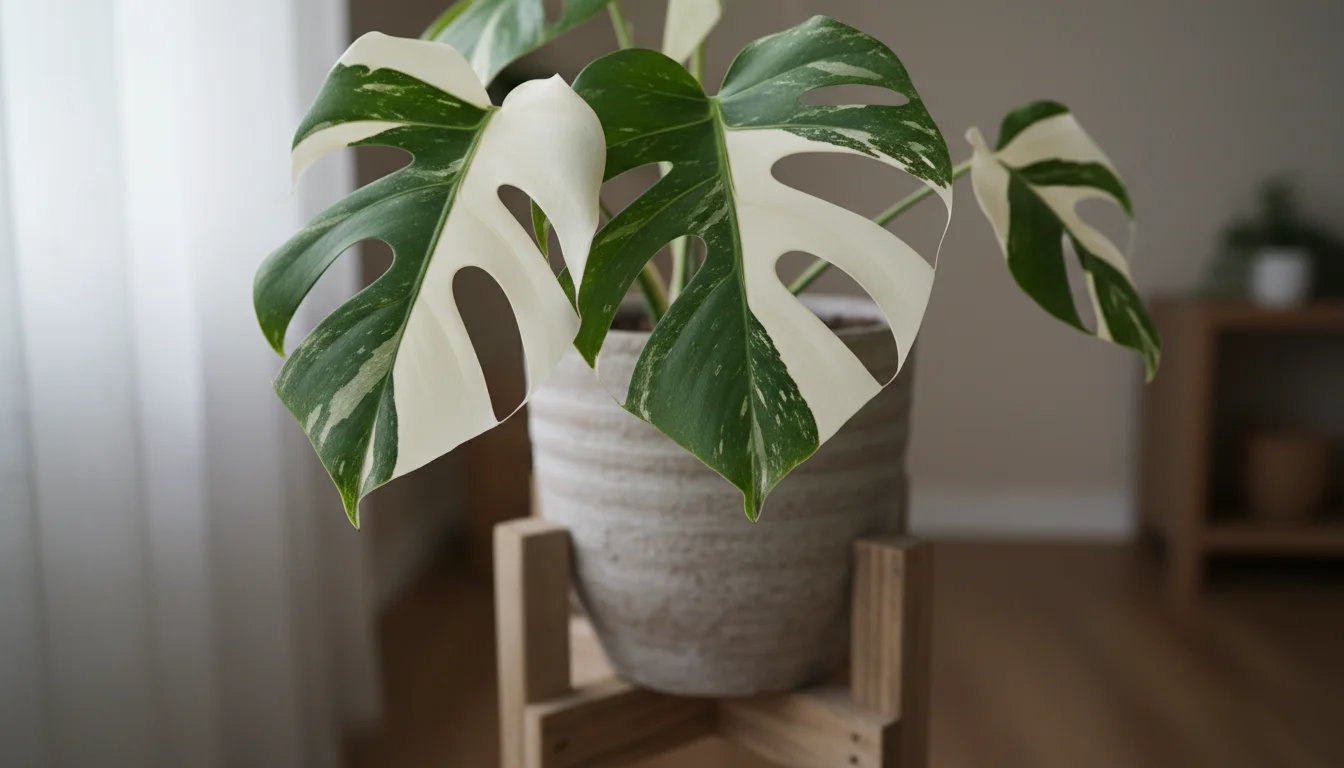
Why Collect Rare Houseplants?
The allure of rare houseplants goes far beyond simple aesthetics. For many plant enthusiasts, it is a passion driven by curiosity, challenge, and the desire to cultivate something truly extraordinary. You bring a piece of the world’s botanical diversity into your living space, enriching your environment with unique textures, colors, and forms.
One primary reason individuals begin collecting rare houseplants is their unique beauty. These are often plants with highly variegated leaves, unusual leaf shapes, or striking patterns that mass-market plants simply do not offer. Imagine a Philodendron with vibrant pink splashes or a Monstera with intricate white marbling. These plants serve as living art pieces, immediately drawing the eye and becoming conversation starters.
Beyond visual appeal, the challenge of successful cultivation motivates many collectors. Rare plants frequently demand specific care conditions that differ significantly from common houseplants. Mastering these requirements brings a deep sense of accomplishment. You develop a more profound understanding of plant physiology and environmental control. This educational aspect transforms you from a casual plant owner into a dedicated horticulturist, honing your skills with each new specimen.
The community aspect also plays a significant role. Collecting rare houseplants often connects you with a global network of fellow enthusiasts. You share knowledge, swap cuttings, and celebrate successes. This sense of belonging enriches your hobby, providing support and inspiration from a community that understands your passion. Online forums, social media groups, and local plant swaps become valuable resources for learning and connection.
Lastly, some collectors view rare plants as an investment. While plant prices can fluctuate, particularly sought-after varieties can appreciate in value, making propagating and selling cuttings a potential side venture. However, you should approach collecting primarily for the joy and beauty the plants offer, with any financial returns considered a bonus. Focus on responsible acquisition and cultivation, and the rewards, both personal and potentially monetary, will follow.
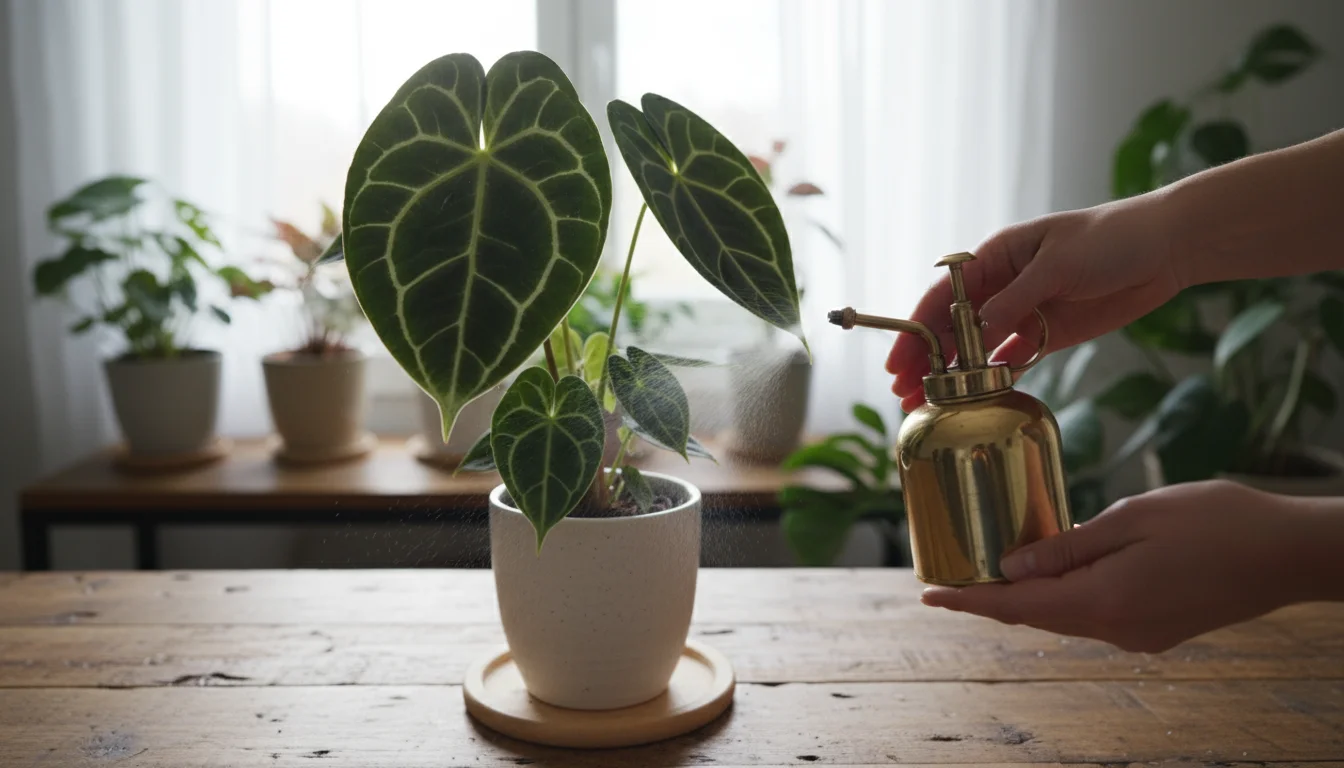
Understanding Rarity and Value in the Plant World
When you embark on collecting rare houseplants, it is crucial to understand what truly constitutes rarity and how value is determined. Not every plant labeled “rare” on an online marketplace genuinely fits the description. True rarity stems from several factors, including natural habitat limitations, slow growth rates, difficulty in propagation, and recent hybridization or mutation.
Plants naturally rare in their native environments, perhaps due to specific soil requirements, limited geographical range, or slow reproduction cycles, often command higher prices. For example, some species of Anthurium or Philodendron grow only in very specific microclimates in rainforests, making them difficult to find and export ethically. This scarcity contributes directly to their rarity and perceived value.
Propagation difficulty also significantly impacts a plant’s availability and cost. Some exotic indoor plants root slowly from cuttings or require specific laboratory conditions for tissue culture propagation. If a plant takes months or even years to produce a single propagule, its market supply remains low, driving up its value. Consider the common Pothos, which propagates readily, versus a highly variegated Monstera, which produces far fewer viable cuttings in the same timeframe.
Variegation, a genetic mutation causing a lack of chlorophyll in parts of the leaf, often elevates a plant’s rarity and price. A prime example is the Monstera deliciosa ‘Albo Variegata’. The striking white patterns make it highly desirable, but the variegation also means less chlorophyll, leading to slower growth and more challenging propagation compared to its non-variegated counterpart. Similarly, specific cultivars or hybrids developed by plant breeders, if produced in limited numbers, also become rare.
Market trends and demand heavily influence perceived value. A plant might become “trendy” due to social media popularity, creating artificial scarcity and inflated prices. While these plants are genuinely unique and beautiful, their high price might not always reflect inherent rarity but rather current demand. You should research a plant’s botanical history and propagation methods to distinguish true rarity from market hype. Check botanical society resources or reputable horticultural sites for information on species origins and conservation status. For research-based houseplant care, you can visit Oregon State Extension — Gardening.
Ethical considerations are paramount. Ensure your desired rare plant is not illegally wild-collected. Many countries have strict regulations on plant export. Reputable nurseries propagate their plants responsibly, often through tissue culture or by growing mother plants from legally sourced cuttings. Always inquire about the origin of your rare specimens. Supporting ethical suppliers helps protect natural ecosystems and promotes sustainable horticulture.
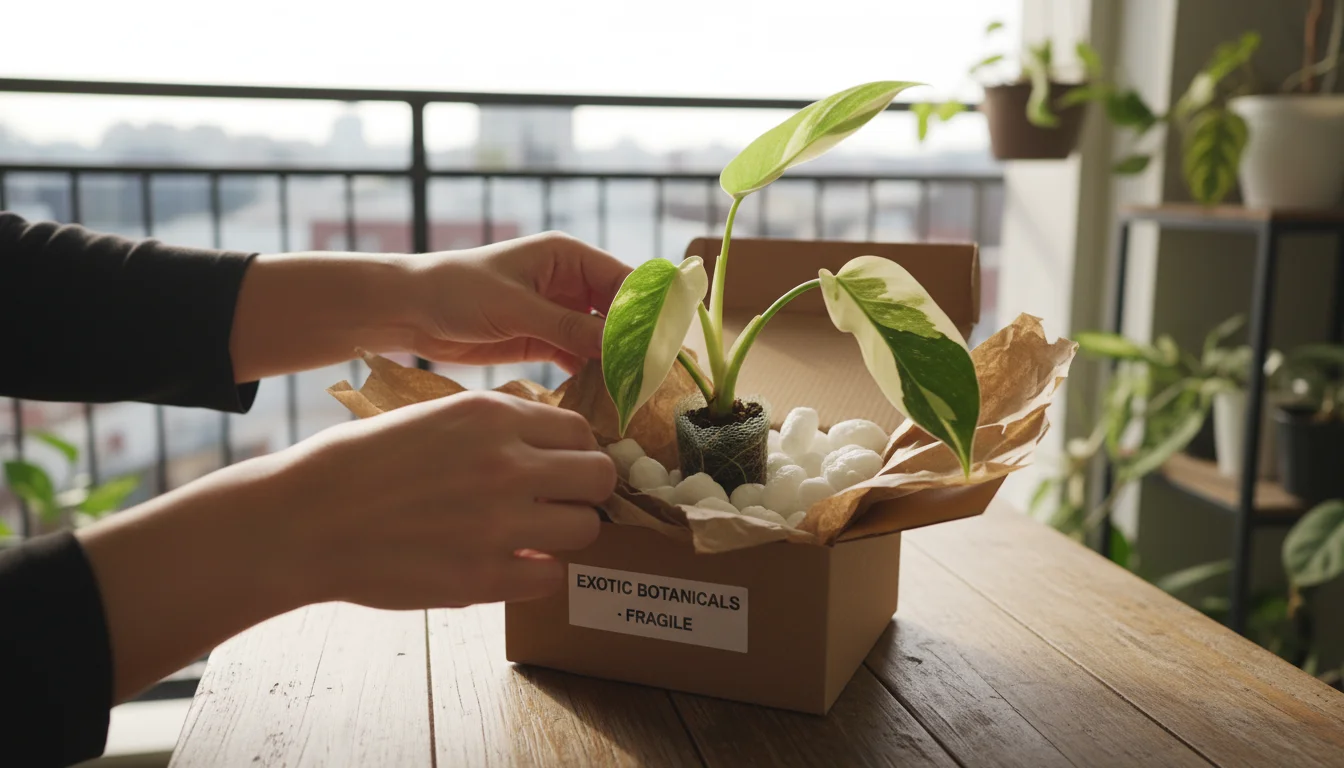
Sourcing Your Exotic Indoor Plants Ethically and Safely
Finding rare houseplants requires diligence, patience, and a commitment to ethical sourcing. The thrill of the hunt is part of the experience, but your choices impact both the environment and your success as a collector. Always prioritize reputable sources to avoid disappointment and inadvertently supporting unsustainable practices.
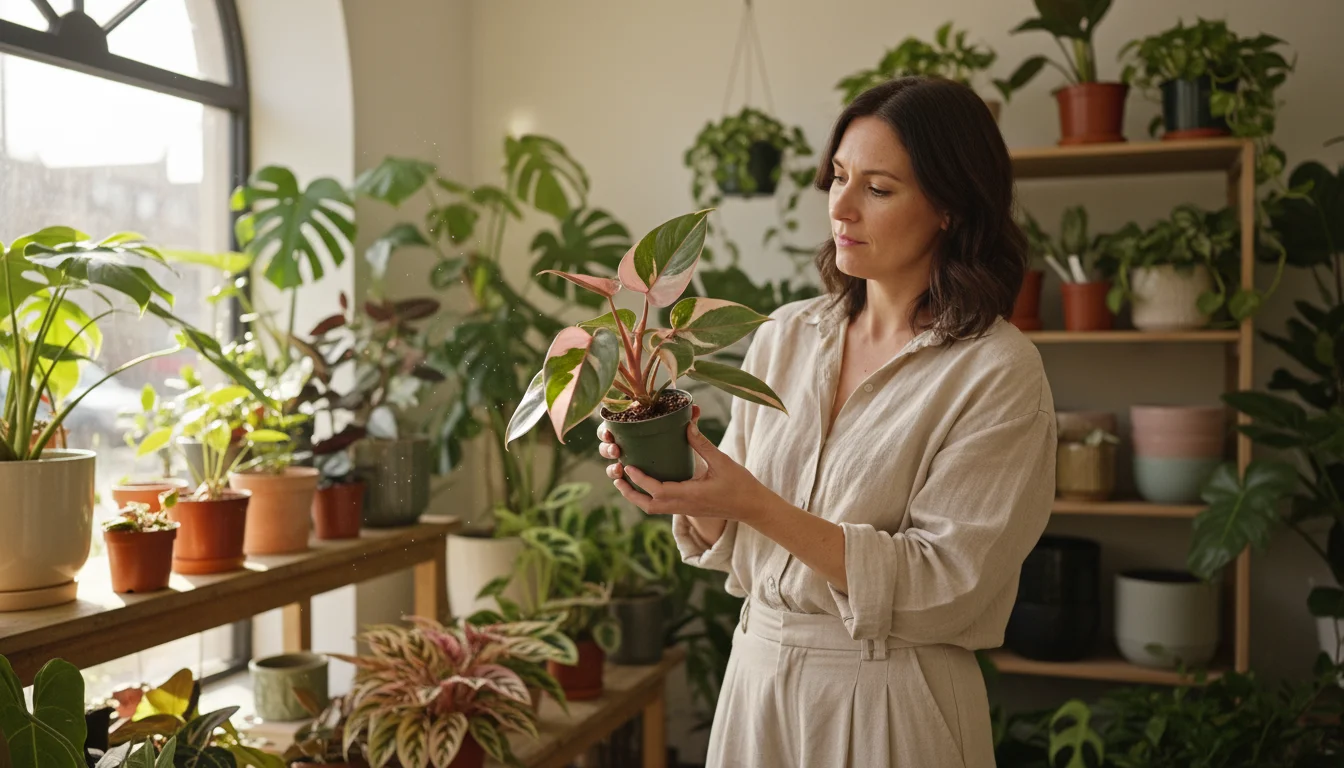
Where to Look for Rare Houseplants
Your search begins by identifying trustworthy vendors. You have several avenues to explore:
- Specialty Plant Nurseries: These brick-and-mortar stores often carry a curated selection of unusual plants. You can inspect plants in person, ask staff for care advice, and build relationships with knowledgeable experts. Local nurseries prioritize healthy stock and can offer localized guidance.
- Reputable Online Retailers: Many online shops specialize in rare and exotic plants. Research reviews extensively before purchasing. Look for vendors with transparent shipping policies, clear images of the actual plant you receive, and strong customer service. Websites like Etsy also feature many small-scale propagators, but vet individual sellers carefully.
- Plant Swaps and Fairs: Local plant societies or botanical garden events sometimes host plant swaps or sales. This offers a fantastic opportunity to acquire unique cuttings or smaller plants at a lower cost, directly from other collectors. You also connect with your local plant community.
- Facebook Groups and Forums: Numerous online communities dedicate themselves to rare plants. Members often sell or trade cuttings. Exercise caution, use secure payment methods, and always request recent photos of the exact plant or cutting you will receive.
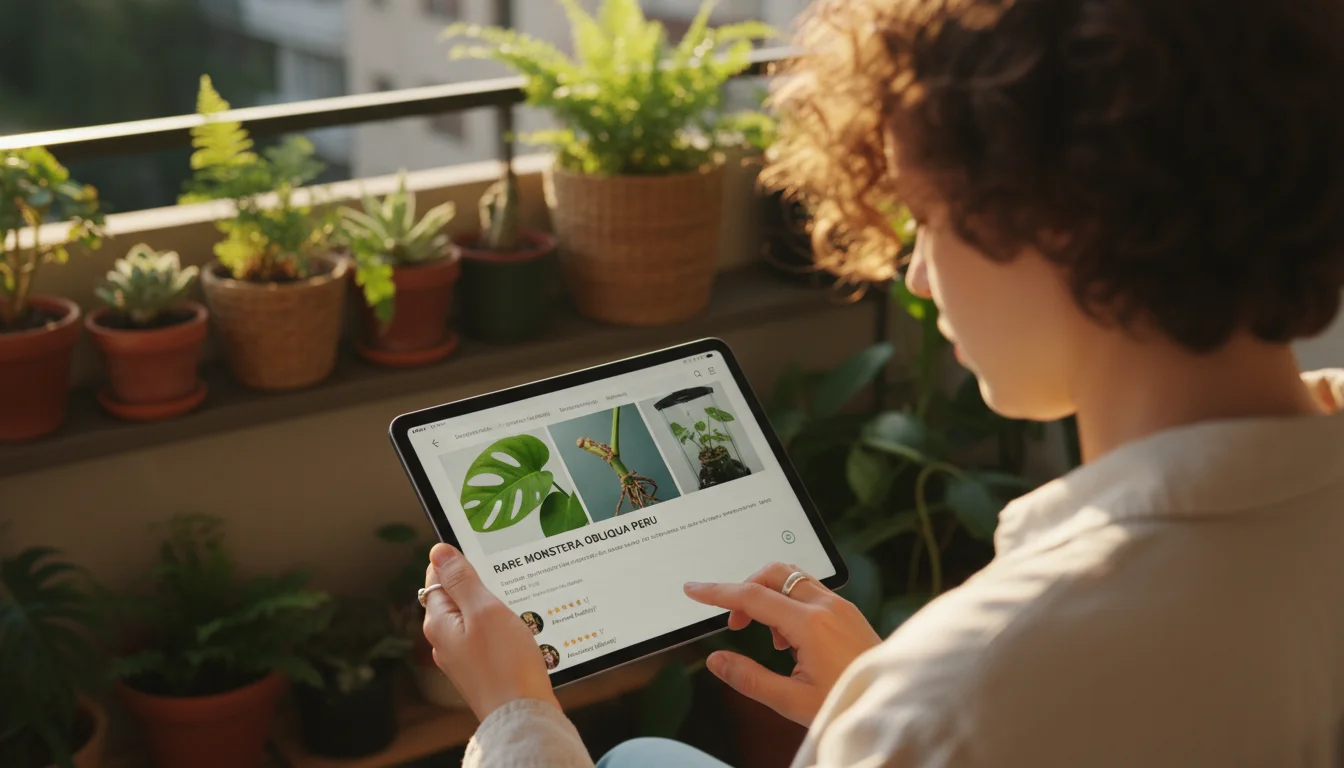
Due Diligence Before You Buy
Before committing to a purchase, especially online, conduct thorough due diligence:
- Check Reviews: Read reviews on multiple platforms. Look for consistent positive feedback regarding plant health, accuracy of descriptions, and shipping quality.
- Ask for Current Photos: Do not rely solely on stock photos. Request recent, clear pictures of the exact plant you will receive, including close-ups of leaves, stems, and the root system if possible.
- Understand Shipping: Inquire about shipping methods, packaging, and heat/cold packs, especially if you order during extreme weather. Discuss their damage policy and what happens if a plant arrives stressed or damaged.
- Verify Origin: Ask about the plant’s origin. Reputable sellers propagate their stock or source it legally. Avoid sellers who cannot provide this information or hint at wild collection.
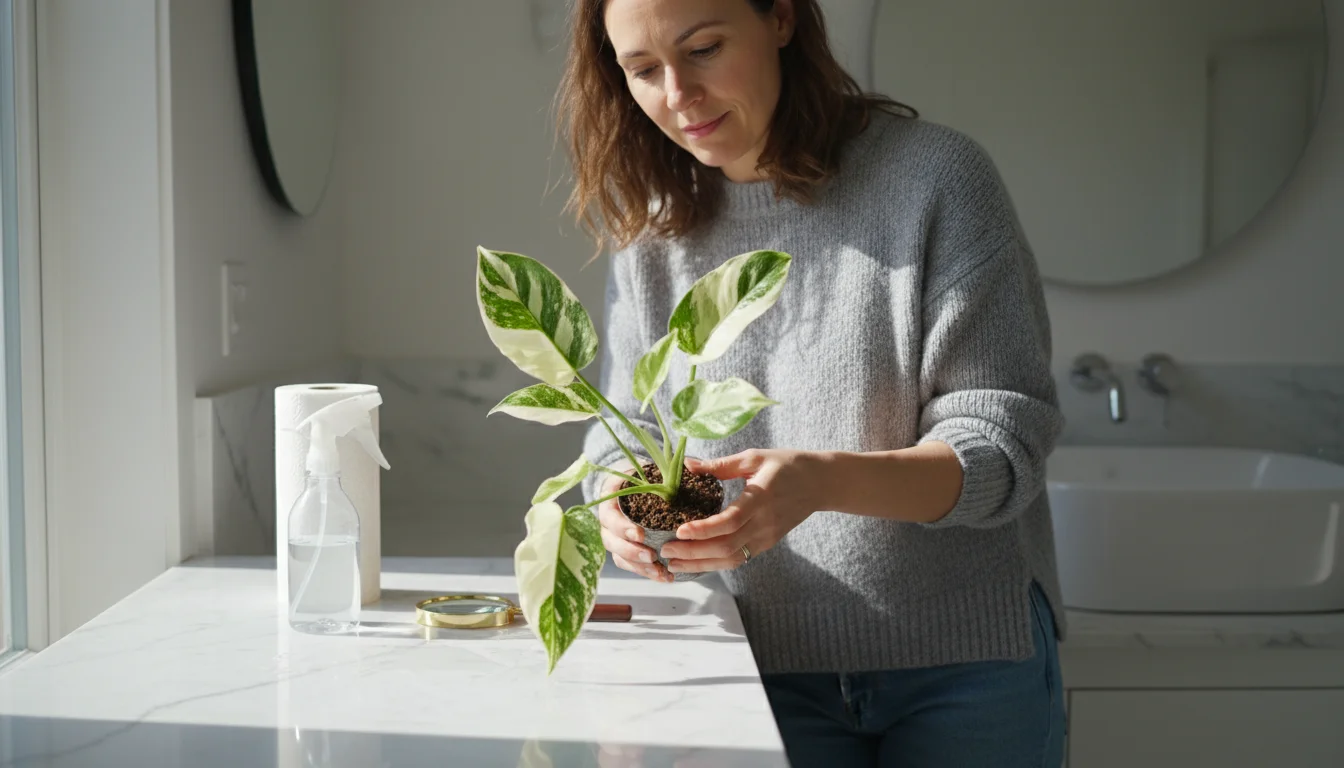
Quarantine and Introduction Protocols
Once your new rare houseplant arrives, implement a strict quarantine protocol to protect your existing collection. New plants can carry pests, diseases, or fungal issues that devastate your established greenery. This step is non-negotiable for any new plant, especially rare and potentially expensive specimens.
- Isolate Immediately: Place the new plant in a separate room or a corner far from other plants. A bathroom or spare bedroom often works well. Ensure it has adequate light and stable temperatures.
- Inspect Thoroughly: Examine every part of the plant. Check the tops and undersides of leaves, stems, and the soil surface for any signs of pests (spider mites, thrips, mealybugs, scale), unusual spots, or mold.
- Initial Treatment: Even if you see no pests, wipe down the leaves with a horticultural oil solution or a neem oil mixture. You can also spray the entire plant with an insecticidal soap as a preventative measure.
- Monitor Closely: Observe the plant daily for at least two to four weeks. Look for new growth, yellowing leaves, dropping leaves, or any resurgence of pests.
- Repot (Optional but Recommended): Consider repotting the plant into your preferred, fresh, well-draining potting mix after a few days, especially if the current soil looks poor or compact. This helps you inspect roots and eliminate potential soil-borne pests.
- Integration: Only introduce the new plant to your main collection once you are absolutely confident it is healthy and pest-free.
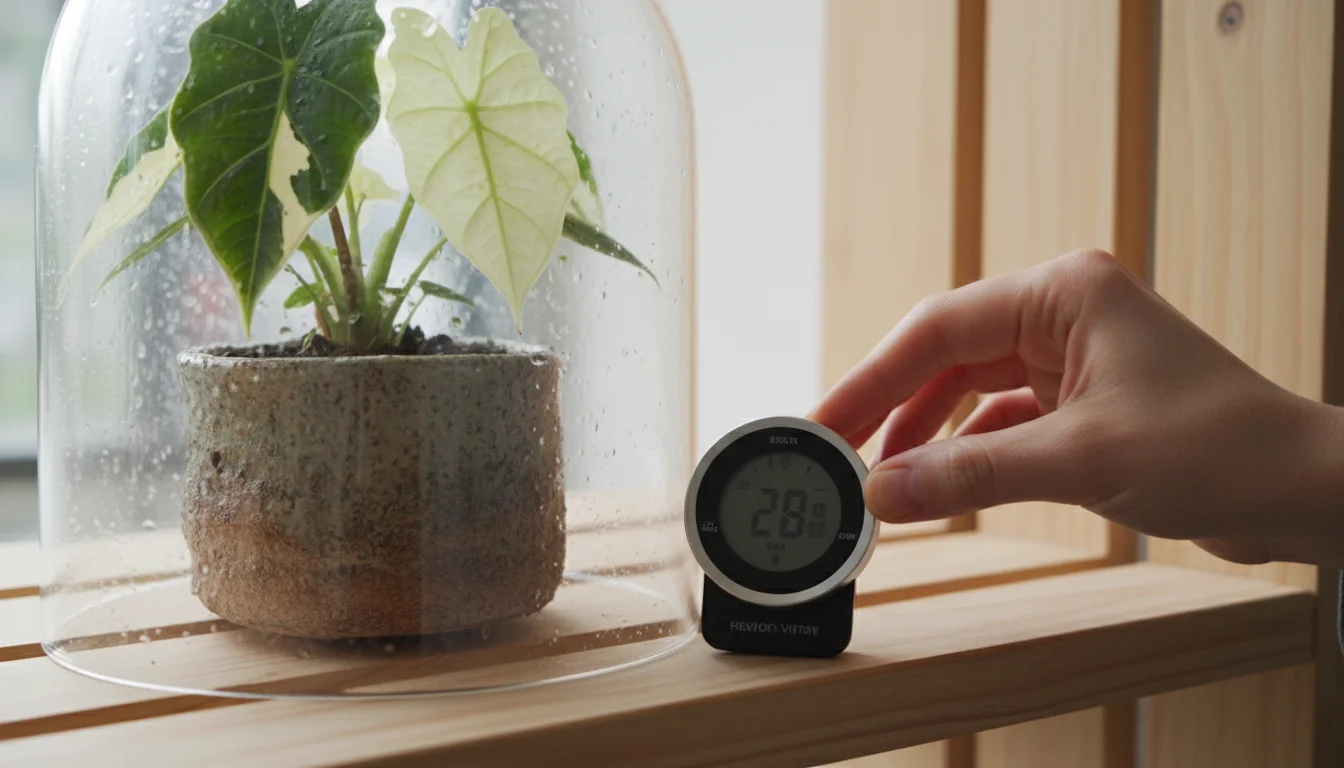
Essential Care for Rare Specimens: Beyond the Basics
Caring for rare houseplants often demands more precision than their common counterparts. While the fundamental principles of light, water, and humidity remain, the stakes are higher, and the margin for error is smaller. You must tailor your approach, understanding that generic advice might not suffice for these delicate and often expensive plants.
Many rare plants originate from specific tropical or subtropical environments. Replicating aspects of their natural habitat as closely as possible is key to their success in your home. This means paying closer attention to microclimates, airflow, and soil aeration, alongside the standard care elements.
One critical aspect is consistency. Rare plants often react poorly to sudden changes in their environment. Maintain stable temperatures, consistent watering schedules, and unchanging light conditions as much as possible. Avoid moving them frequently, especially when they are acclimatizing to your home.
Another often overlooked element is observation. Spend time each day or every other day actively looking at your plants. Observe the color of the leaves, the turgidity of the stems, the moisture level of the soil, and any new growth. Early detection of issues, whether it is a nutrient deficiency, pest infestation, or improper watering, allows you to intervene quickly before problems become severe. Your proactive engagement makes a significant difference in the longevity and health of your rare collection.
Consider the investment you make, both financially and emotionally, in these plants. This investment justifies using higher quality inputs: premium potting mixes, filtered water (especially if your tap water is hard or chlorinated), and appropriate supplemental lighting if natural light is insufficient. These small upgrades contribute significantly to the overall well-being of your precious specimens.
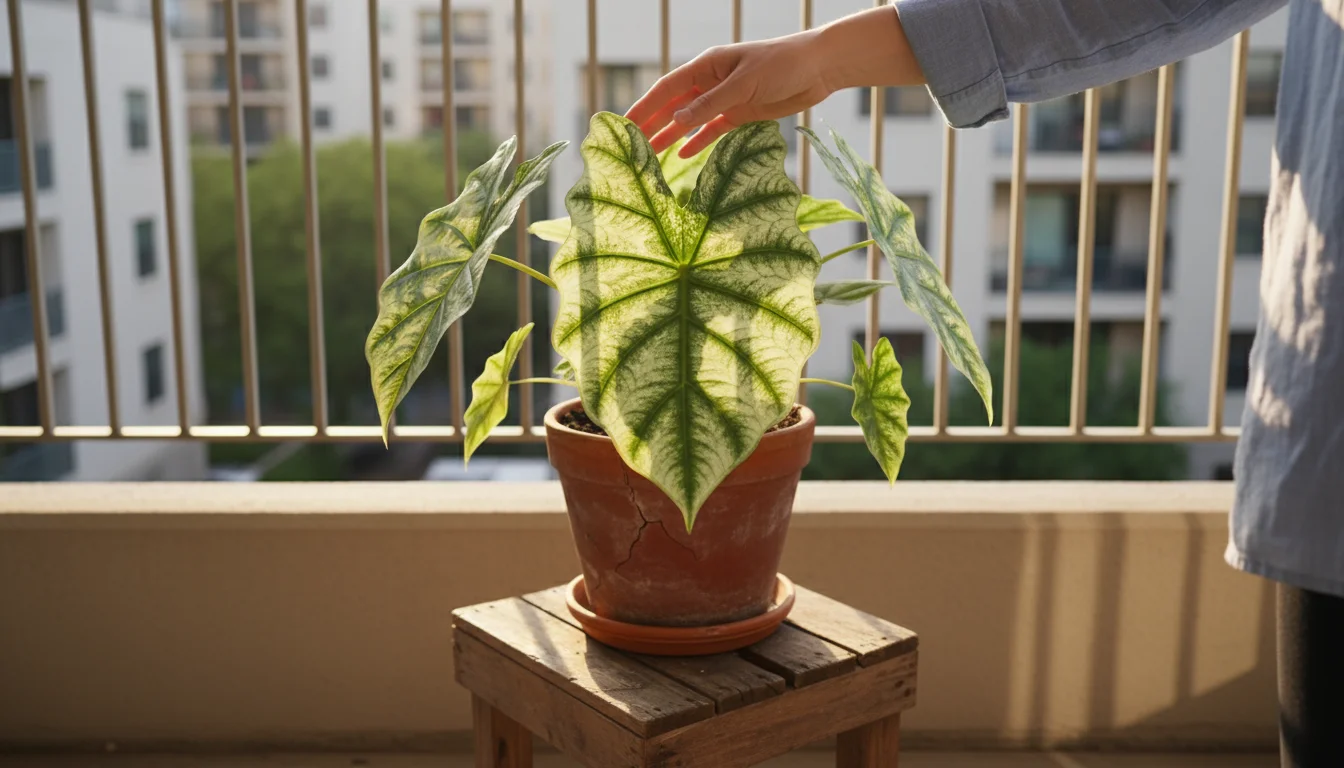
Light Made Simple for Rare Plants
Light is the fuel for photosynthesis, essential for all plant life. For rare houseplants, understanding and providing the correct light intensity is paramount, as many exotic indoor plants come from understories of tropical forests where they receive filtered light. Misinterpreting light requirements is a common pitfall that leads to stunted growth or decline.
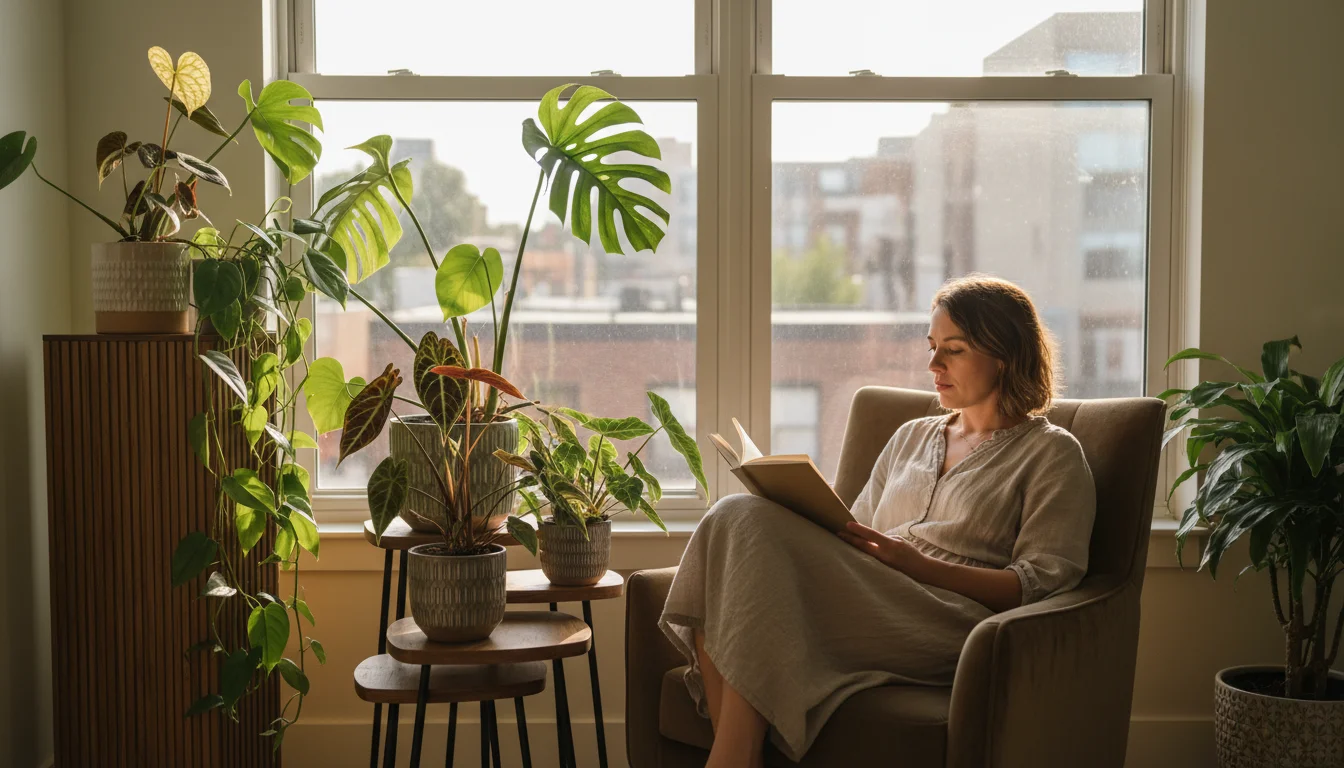
Defining Light Levels
Forget vague terms. Let us break down light practically for your small-space environment:
- Low Light: This refers to an area several feet away from a window, or a room with only a north-facing window. You could comfortably read a book here without additional light. Plants that tolerate low light manage, but rarely thrive, in these conditions. Examples include ZZ plants and Snake Plants. Most rare plants do not perform well in genuinely low-light conditions.
- Medium Light: This is a brighter area, but still without direct sun. It is a few feet from an east or west-facing window, or near a south-facing window that receives no direct sun. You can perform detailed tasks without strain here.
- Bright Indirect Light: This is the sweet spot for most rare and exotic houseplants. Imagine standing near a window where the sun never directly hits the leaves. This is typically within 1-3 feet of an east-facing window, or a south/west-facing window with a sheer curtain diffusing the harsh sunlight. The light is strong and consistent, but the leaves never scorch. This condition mimics the dappled light of a rainforest canopy.
- Bright Direct Light: Unfiltered sunlight directly striking the leaves for several hours. This is typically near an unobstructed south or west-facing window. Few rare tropical plants tolerate this without scorching, especially those with delicate or variegated foliage.
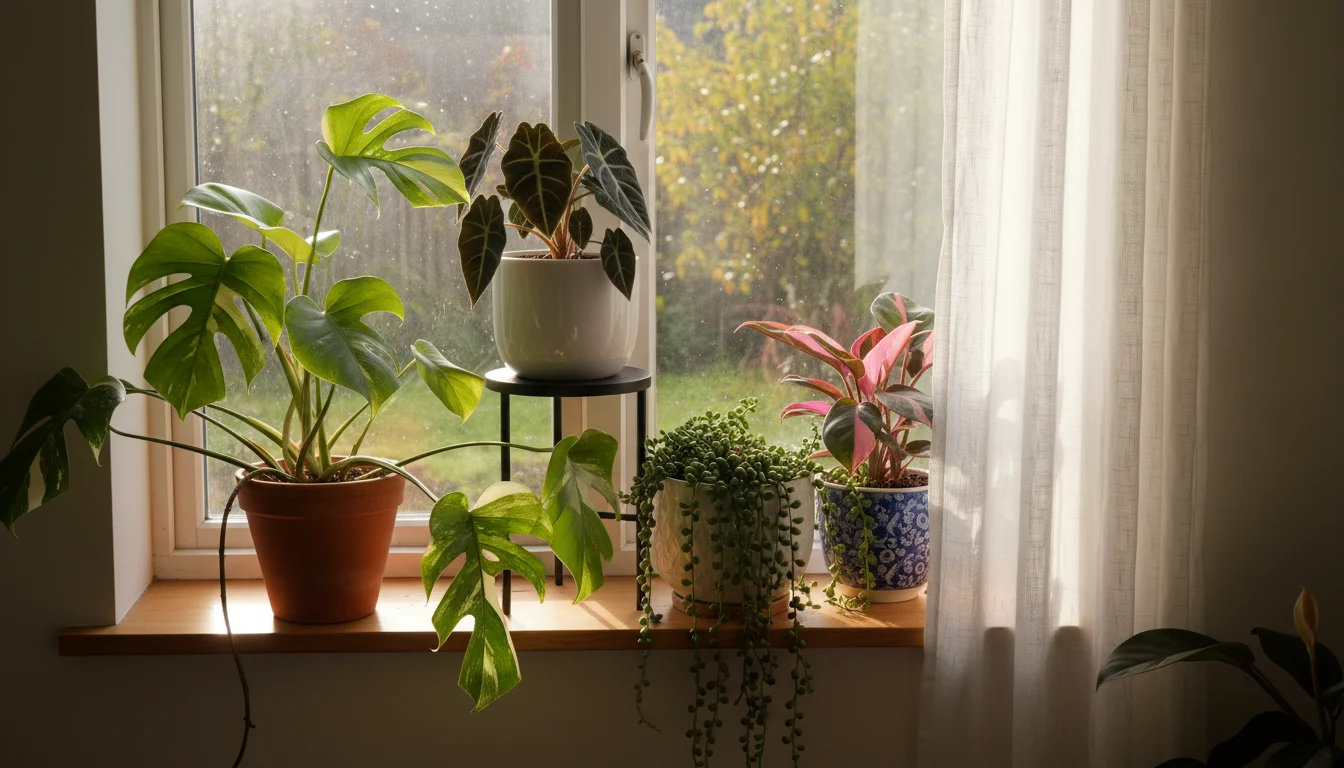
Window Orientation and Distance
Your window orientation significantly impacts available light:
- North-facing Window: Provides consistent, gentle light. Suitable for plants requiring low to medium indirect light. Most rare aroids will struggle here without supplemental light.
- East-facing Window: Offers gentle morning sun, followed by bright indirect light for the rest of the day. This is often ideal for many rare tropical plants. Place plants directly in the window.
- West-facing Window: Delivers intense afternoon sun, which can be too harsh. Place plants a few feet back or use a sheer curtain to diffuse the light. This provides excellent bright indirect light.
- South-facing Window: Gives the strongest light throughout the day. Always use a sheer curtain or position plants several feet away to achieve bright indirect conditions.
Distance is Key: Light intensity decreases exponentially with distance from the window. Moving a plant just 3 feet back from a window can reduce light by more than half. For rare plants requiring bright indirect light, position them as close to an appropriate window as possible without exposing them to direct sun.
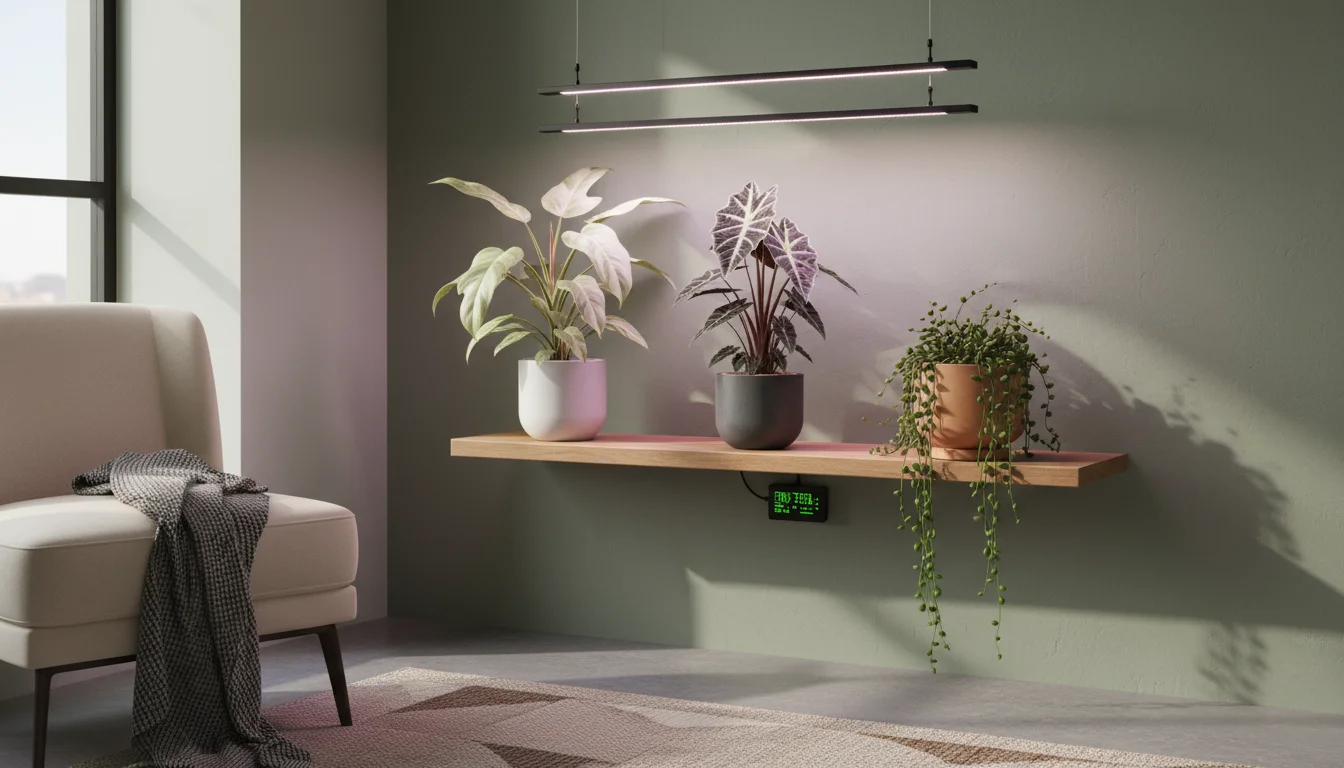
Supplemental Lighting Solutions
If your natural light is insufficient, especially in small apartments or during winter months, high-quality grow lights are an excellent investment for rare plants. Modern LED grow lights are energy-efficient, compact, and emit specific spectrums beneficial for plant growth. You do not need large, industrial lights; small, full-spectrum LEDs suffice for a small collection.
- Placement: Position grow lights 6-12 inches above your plant canopy. Adjust based on the plant’s reaction. Too close, and leaves may burn; too far, and they stretch.
- Duration: Provide 12-14 hours of artificial light per day, mimicking natural daylight cycles. Use a simple timer for consistency.
Always err on the side of brighter indirect light for rare plants. While common plants might tolerate suboptimal conditions, your prized exotic specimens will truly flourish when their light needs are precisely met.
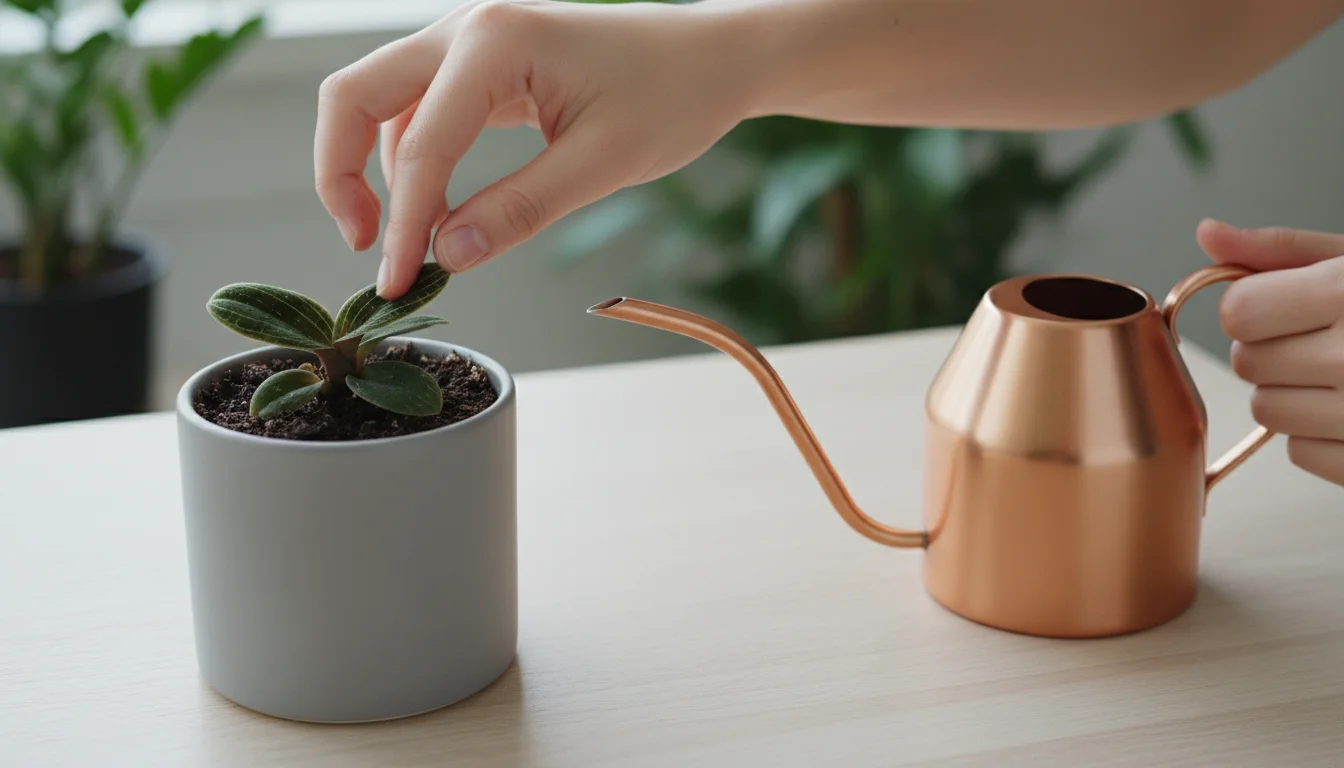
Watering Without Guesswork for Sensitive Roots
Watering correctly is perhaps the most challenging aspect of houseplant care, and for rare specimens with delicate root systems, it becomes even more critical. Overwatering leads to root rot, a silent killer, while consistent underwatering causes stress and stunted growth. The goal is to provide adequate moisture when the plant needs it, allowing for proper aeration between waterings.
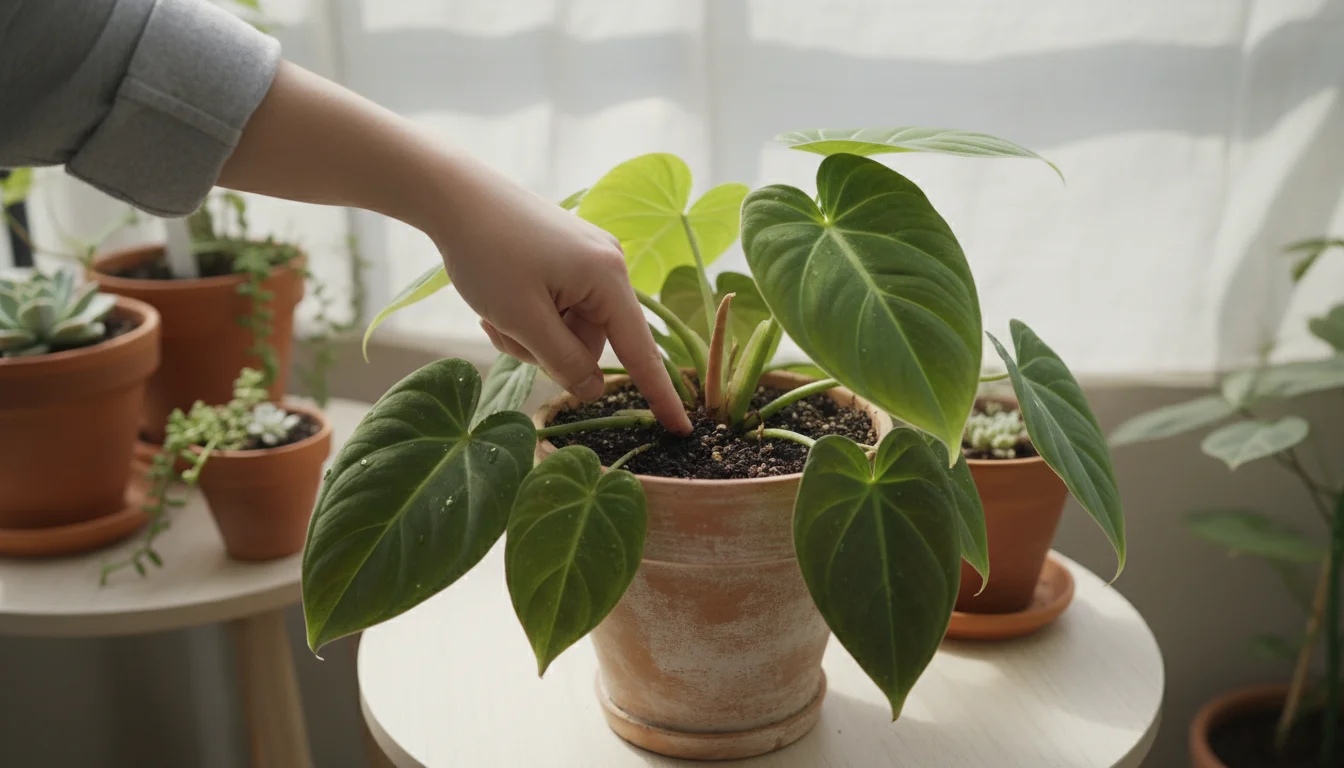
The Finger Test: Your Primary Tool
The most reliable method for determining when to water remains the finger test:
- Insert Your Finger: Gently insert your index finger about 2-3 inches deep into the potting mix, near the center of the pot.
- Assess Moisture:
- If the soil feels damp, wait a few more days.
- If the soil feels dry at that depth, it is likely time to water.
This test varies for different plants. For many rare aroids, allow the top 1-2 inches of soil to dry out. For succulents or plants prone to rot, let the soil dry out even further, sometimes 50% or more of the pot’s depth. Always research the specific plant’s preference.
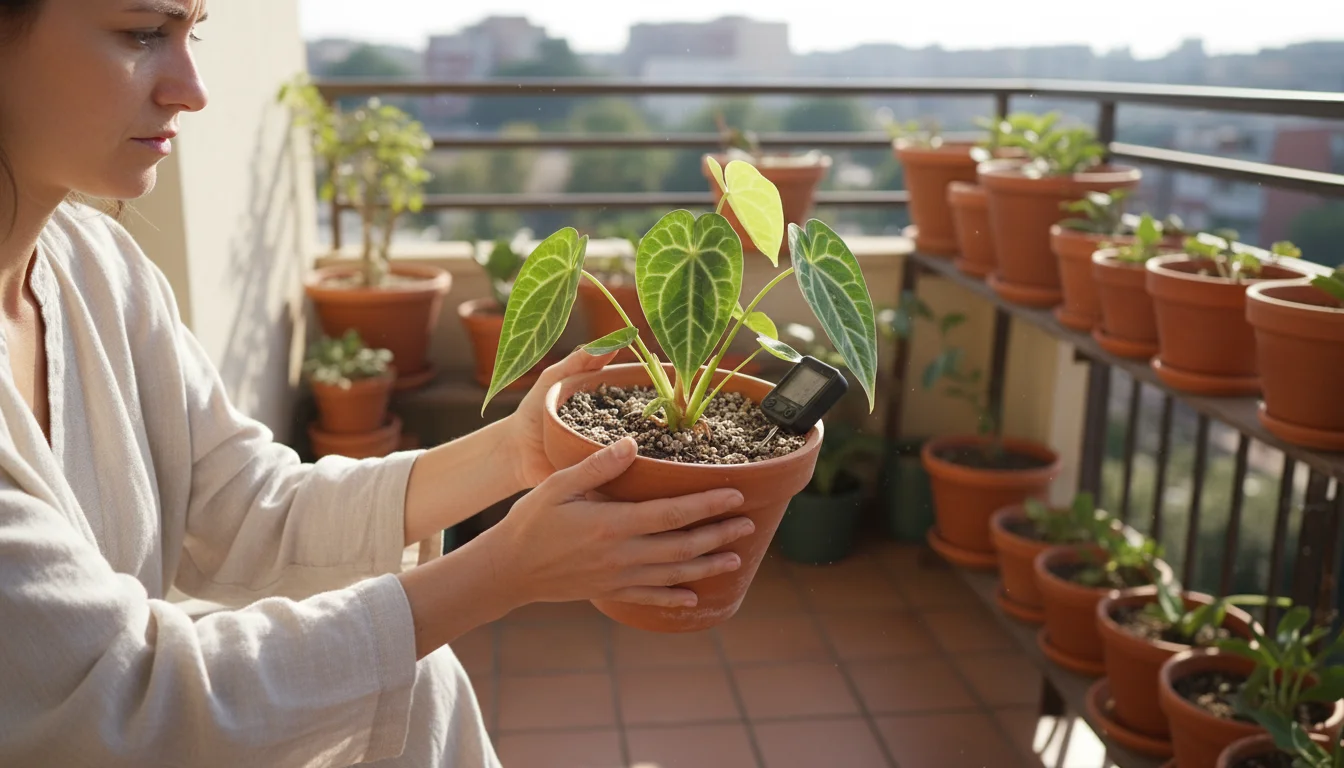
Soil Moisture Cues
Beyond the finger test, observe these cues from your plant and its environment:
- Pot Weight: A pot feels significantly lighter when dry compared to when it is thoroughly watered. Lift your pots to gauge their weight over time.
- Leaves: Wilting or drooping leaves often indicate a need for water. However, wilting can also signify overwatering and root rot, so cross-reference with the finger test. Yellowing leaves frequently point to overwatering.
- Moisture Meters: While not as foolproof as the finger test, a good quality moisture meter provides a numerical reading of soil moisture. Use it as a supplemental tool, ensuring you calibrate it regularly and clean the probe.
- Potting Mix Color: Darker soil usually indicates moisture, while lighter soil suggests dryness. This is a surface-level indicator, but it helps.
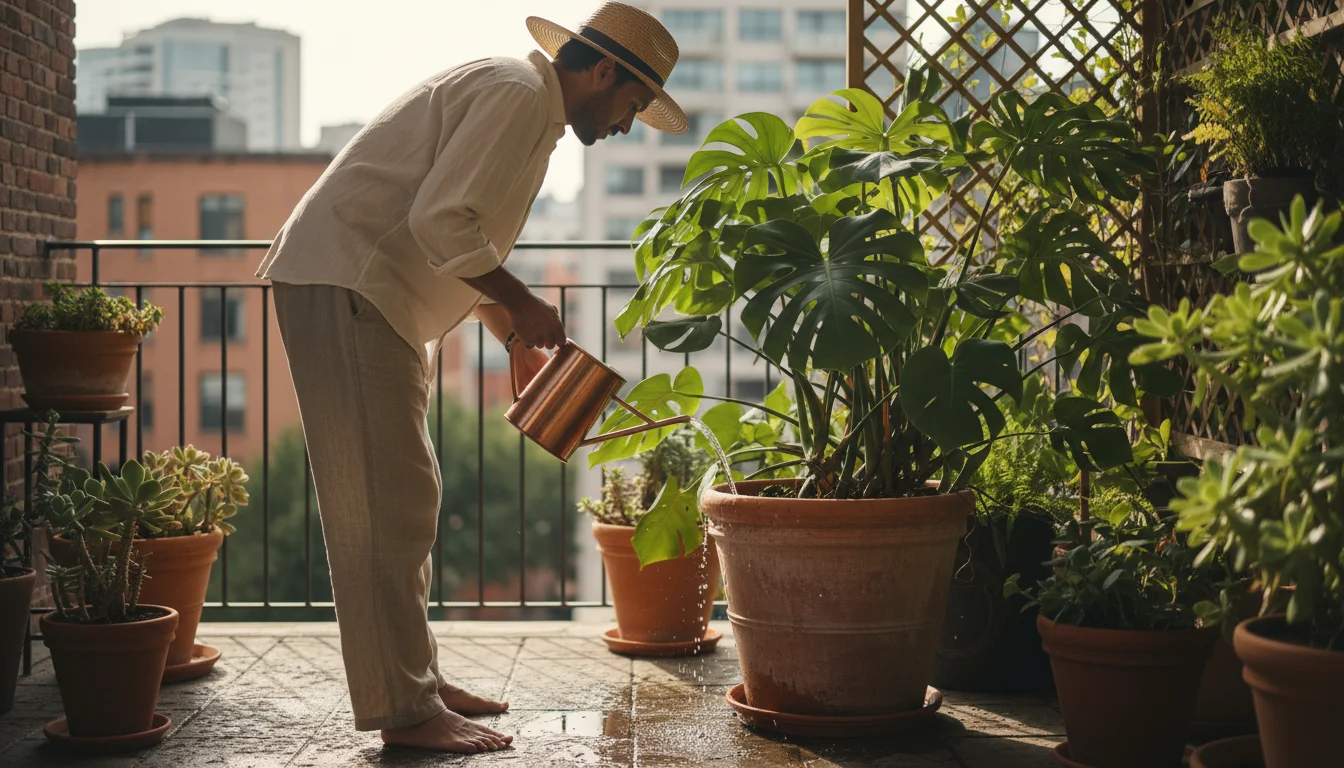
How to Water Effectively
- Water Thoroughly: When you water, do so until water drains freely from the bottom of the pot. This ensures the entire root ball receives moisture and flushes out accumulated salts. Discard any standing water in the saucer after 15-30 minutes.
- Temperature Matters: Use room-temperature water. Cold water shocks roots and slows nutrient absorption. If your tap water is heavily chlorinated, let it sit out for 24 hours to allow chlorine to dissipate.
- Watering Intervals:
Plant Type Example Typical Interval (Approx.) Finger Test Guide Most Aroids (Philodendron, Monstera) Every 7-14 days Top 1-2 inches dry Alocasia, Anthurium Every 5-10 days Top 1 inch just dry Succulents, Cacti Every 2-4 weeks Soil completely dry Ferns, Calatheas (humidity lovers) Every 5-7 days Top 0.5 inch just dry Note: These are approximations. Adjust based on environmental factors like light, humidity, and pot size.
- Bottom Watering: For some rare plants, bottom watering prevents soil compaction and allows the plant to absorb water at its own pace. Place the pot in a tray of water for 20-30 minutes, allowing the plant to wick water upwards. Remove and let excess drain.
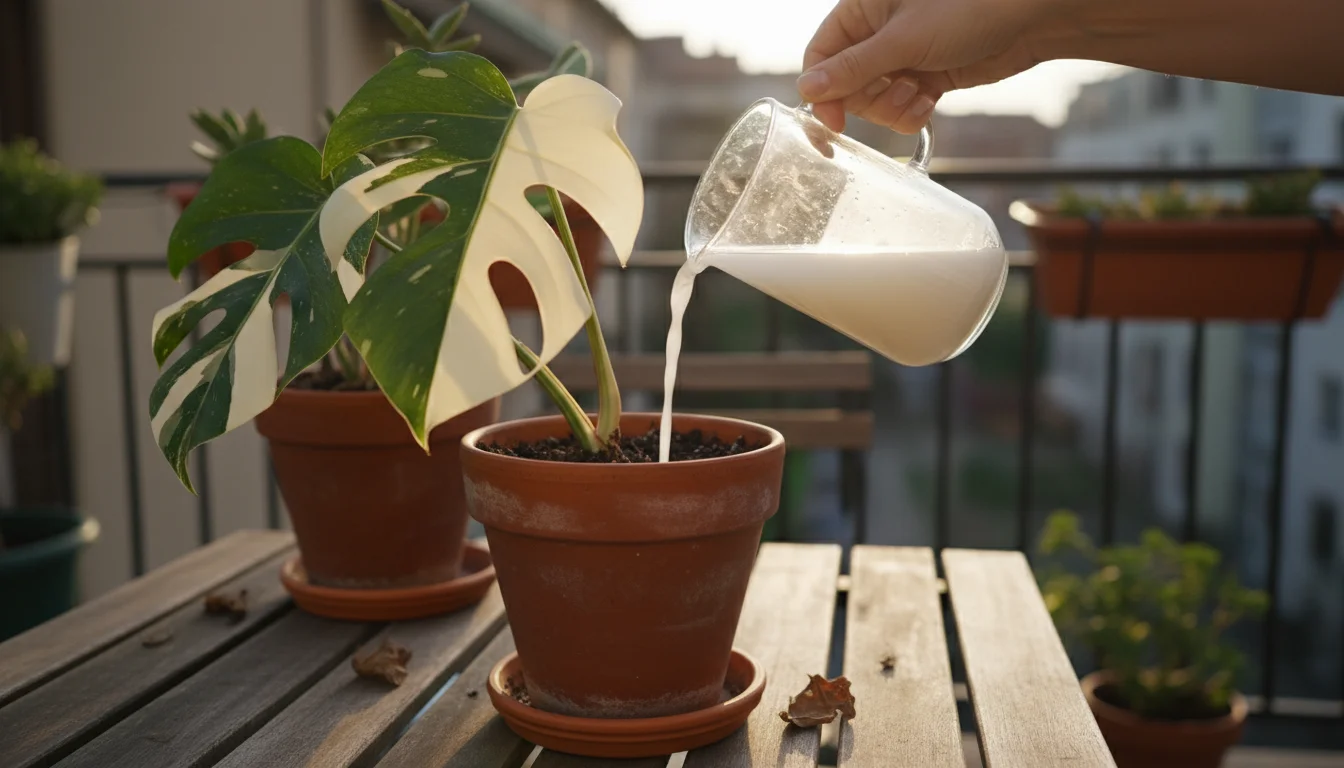
Water-Wise Habits for Sustainability
Practice water-wise habits to benefit your plants and the environment. Collect rainwater or dechlorinated water for your plants when possible. Reuse water from cooking vegetables (once cooled) as it contains beneficial nutrients. Avoid letting your hose run needlessly. Your mindful approach conserves resources while ensuring your rare plants thrive.
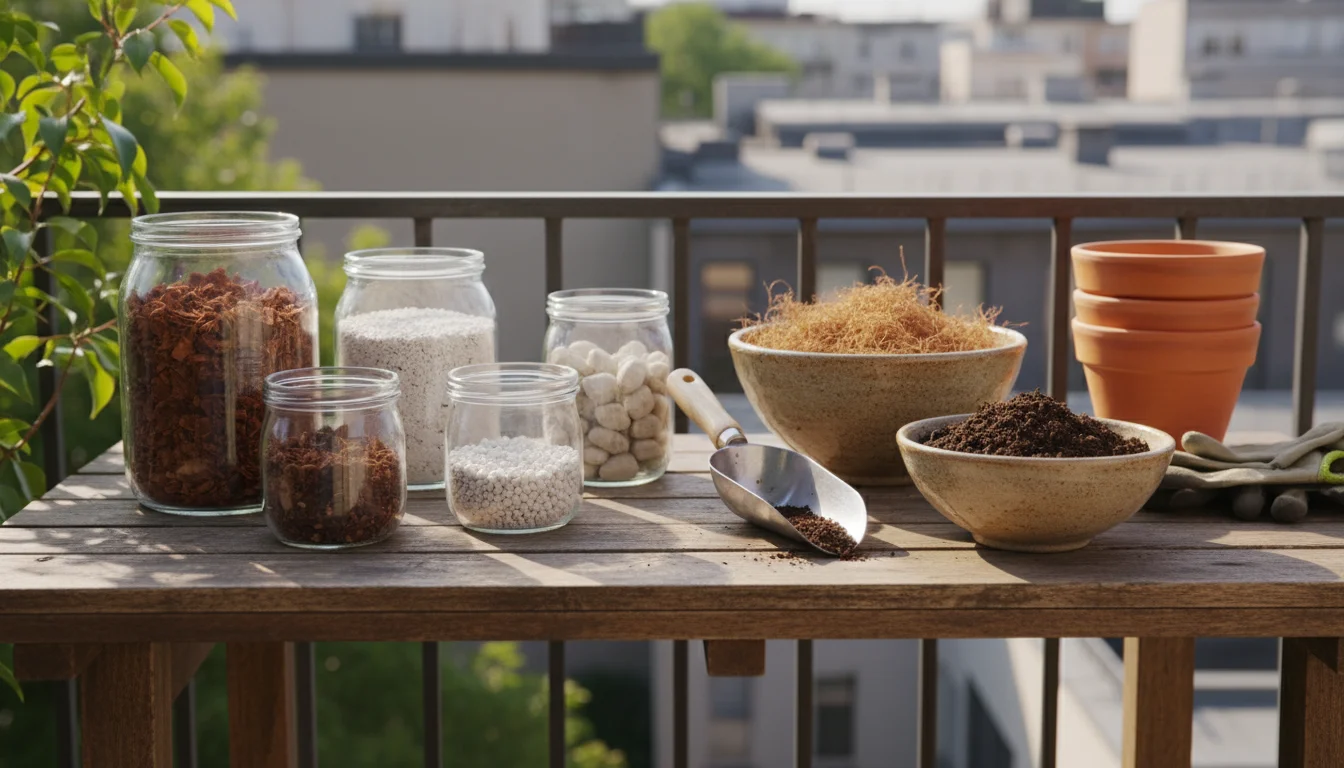
Potting Mix and Repotting Strategies for Delicate Varieties
The right potting mix is the foundation for a healthy root system, especially for rare and sensitive plants. It provides structural support, aeration, and moisture retention. A generic all-purpose mix rarely suffices for exotic indoor plants. You need to understand components and customize your blend for optimal growth.
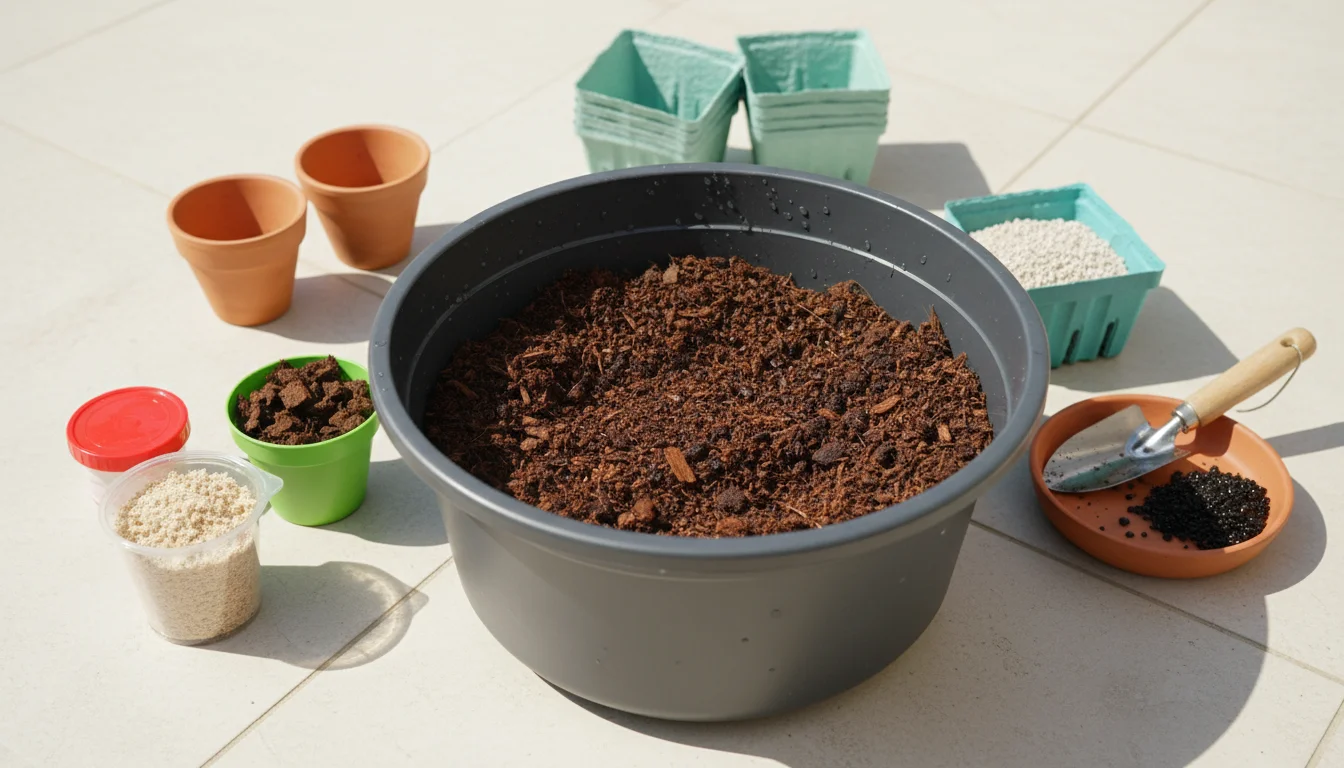
Understanding Potting Mix Components
A good potting mix balances moisture retention with excellent drainage and aeration. Here are key components, emphasizing sustainable choices:
- Peat-Free Base: Traditional peat moss is not a sustainable choice due to its environmental impact. Opt for peat-free alternatives.
- Coco Coir: A sustainable alternative derived from coconut husks. It holds moisture well, provides good aeration, and is naturally pH neutral.
- Compost: Provides nutrients and improves soil structure. Use high-quality, well-rotted compost.
- Aeration Enhancers: These prevent compaction and promote healthy root growth, crucial for rare plants prone to root rot.
- Perlite: Lightweight, volcanic rock that creates air pockets, improving drainage and aeration.
- Pumice: Similar to perlite but heavier, offering more stability. It retains some moisture and provides excellent drainage.
- Orchid Bark (Fir Bark): Large, chunky pieces that create significant air pockets. Excellent for epiphytic plants like many aroids and orchids.
- Lava Rock (Scoria): Porous and heavy, enhancing drainage and providing minerals.
- Moisture Retainers (Optional/Specific):
- Vermiculite: A mineral that retains water and nutrients. Use sparingly, as too much makes a mix too dense.
- Sphagnum Moss: Excellent for high humidity and propagation, but it compacts and degrades over time. Often used as a top dressing or in specific propagation mixes.
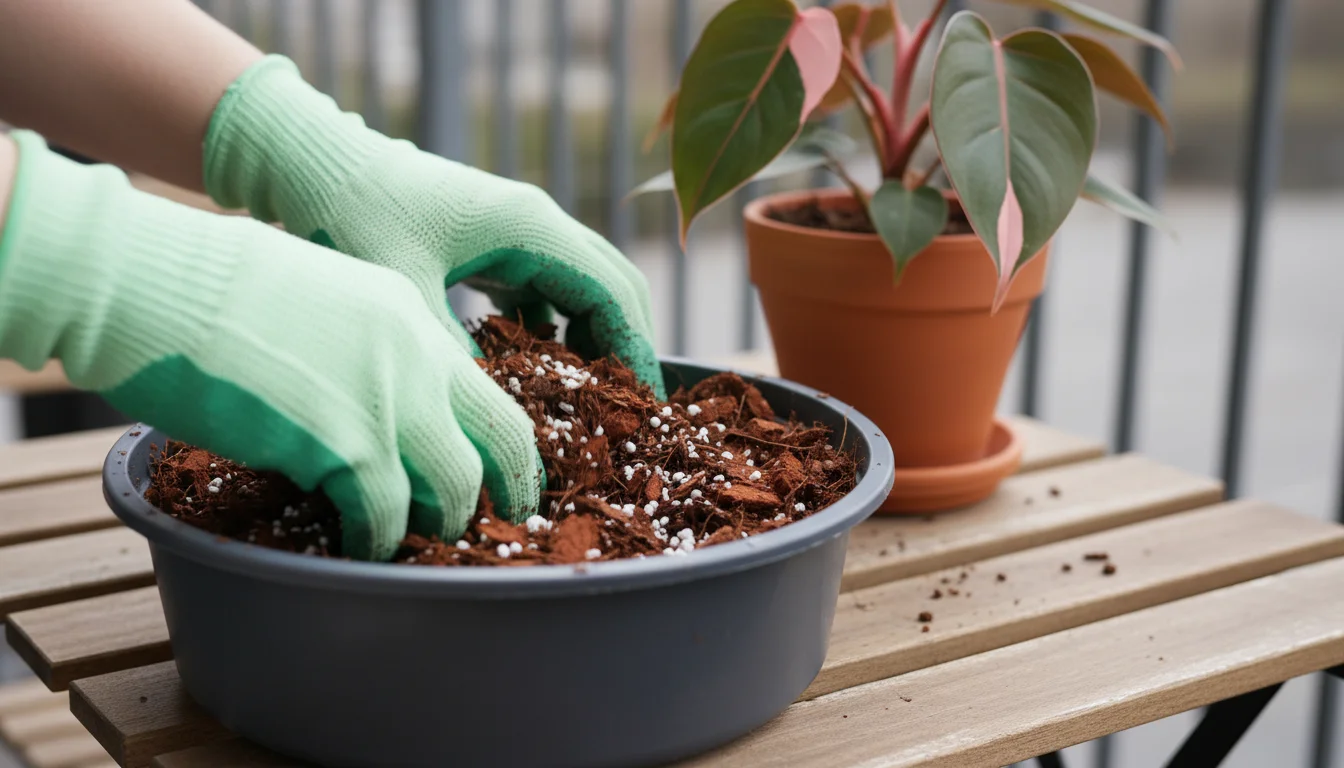
Customizing Your Mix for Rare Plants
Different plant families require different ratios. Here are common blends for exotic indoor plants:
- For Most Aroids (Philodendron, Monstera, Anthurium):
- 1 part coco coir (or compost)
- 1 part orchid bark
- 1 part perlite or pumice
- (Optional: a handful of worm castings for nutrients)
This mix provides excellent drainage, essential for their aerial roots, while retaining sufficient moisture.
- For Alocasia, Calathea (higher moisture needs, but still good drainage):
- 2 parts coco coir (or compost)
- 1 part perlite
- 0.5 part orchid bark
- (Optional: a small amount of vermiculite for extra moisture retention)
- For Epiphytic Cacti (e.g., Rhipsalis, Epiphyllum):
- 1 part coco coir
- 1 part orchid bark
- 0.5 part perlite
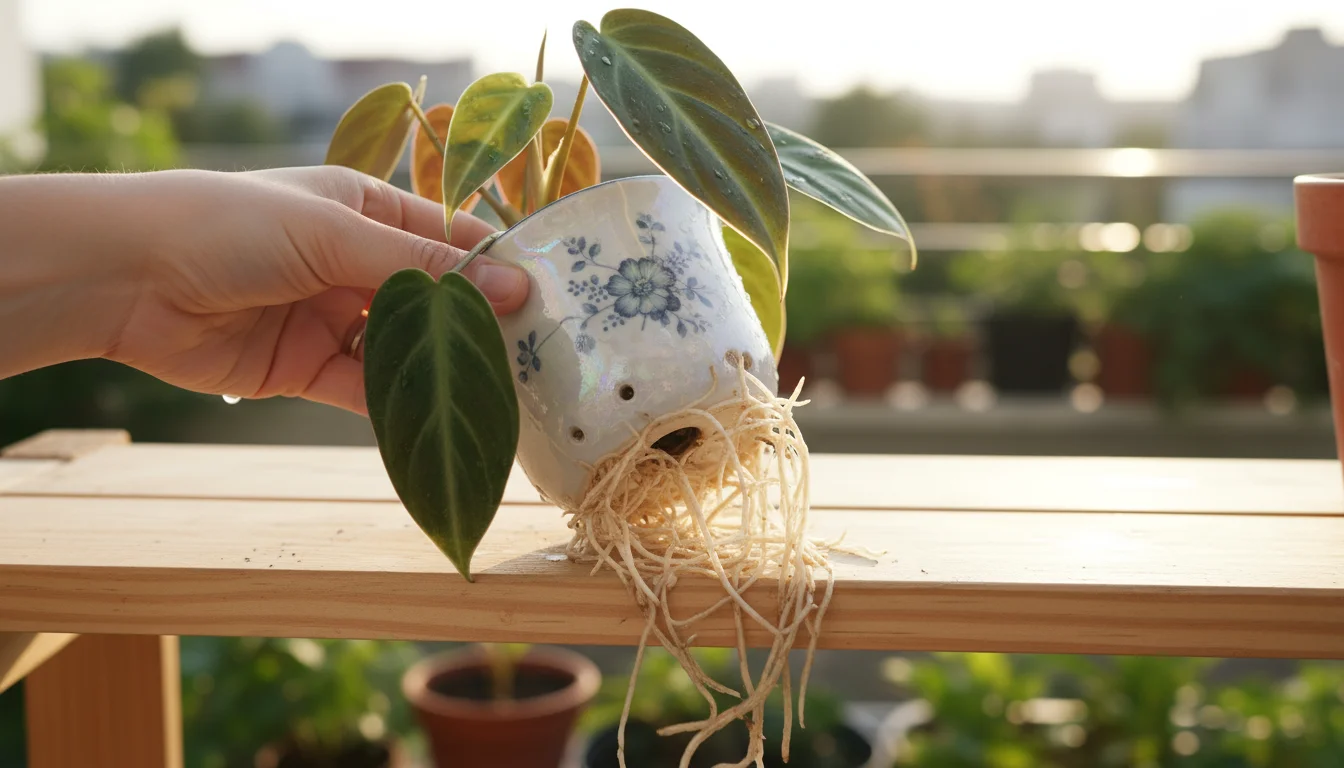
When to Repot Rare Houseplants
Repotting is a stressful event for any plant, especially rare and sensitive ones. Only repot when necessary:
- Root-Bound: Roots grow out of drainage holes, circle the pot, or push the plant upwards.
- Stunted Growth: The plant stopped growing despite ideal conditions, suggesting it ran out of space or nutrients.
- Soil Degradation: The potting mix breaks down, becomes compacted, or smells sour, indicating poor aeration and drainage.
- Acclimation: After acquiring a new plant, if its current soil is clearly unsuitable or heavily compacted.
Repot during the plant’s active growing season (spring or early summer) to allow it to recover quickly. Avoid repotting during dormancy or stress.
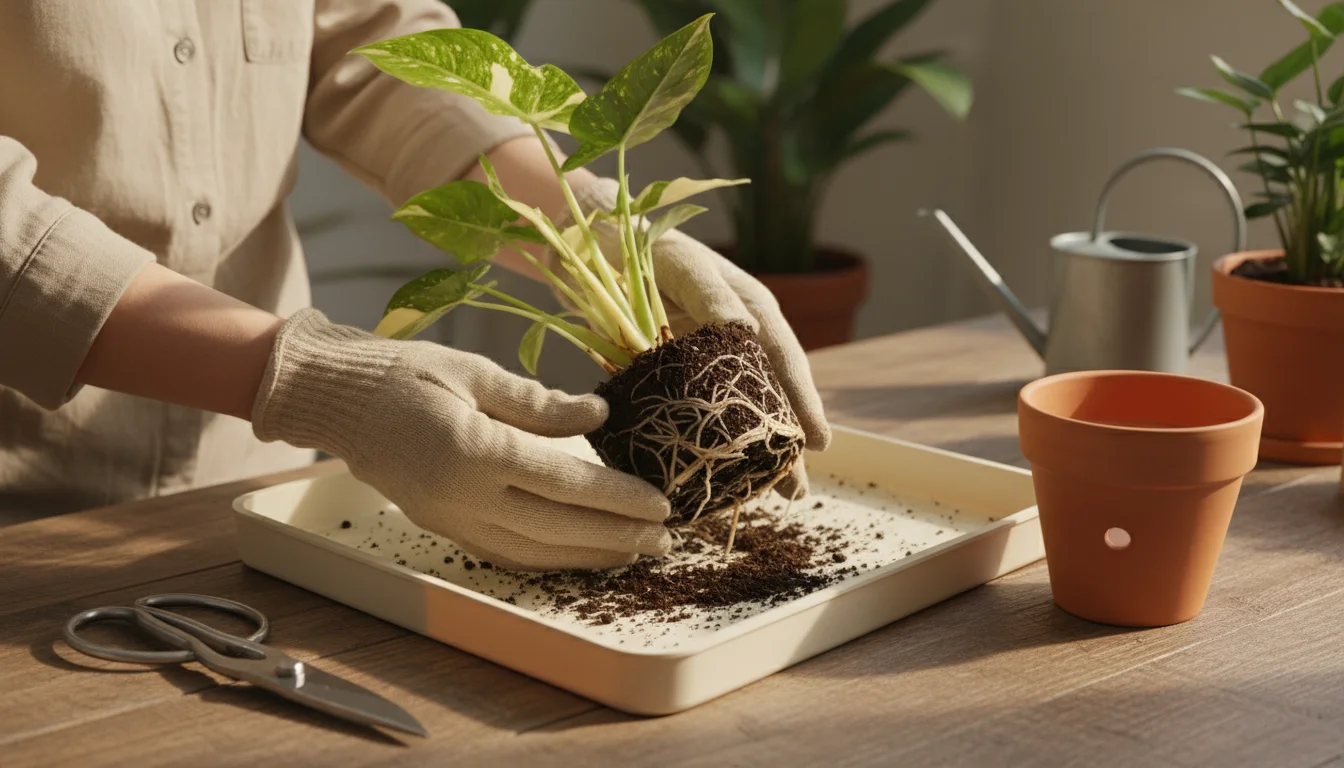
Repotting Process: Step-by-Step
- Prepare: Gather your new pot (only one size larger, typically 1-2 inches in diameter), fresh potting mix, sterile pruners, and gloves.
- Loosen: Gently tip the plant on its side and carefully slide it out of its current pot. Avoid pulling it by the stem.
- Inspect Roots: Carefully tease apart some of the outer roots. Trim any circling, mushy, or dark (rotting) roots with your sterile pruners. Healthy roots appear firm and white or light tan.
- Add Mix: Place a layer of fresh potting mix in the bottom of the new pot.
- Position: Center the plant in the new pot, ensuring the top of the root ball sits at the same level as it did in the old pot.
- Fill: Backfill around the roots with the new mix, gently tapping the pot to settle the soil. Avoid compacting the soil too much; you want good aeration.
- Water: Water thoroughly until water drains from the bottom. This helps settle the soil and provides initial hydration.
- Recover: Place the repotted plant in a slightly shadier spot for a week or two to reduce stress, then return it to its usual location.
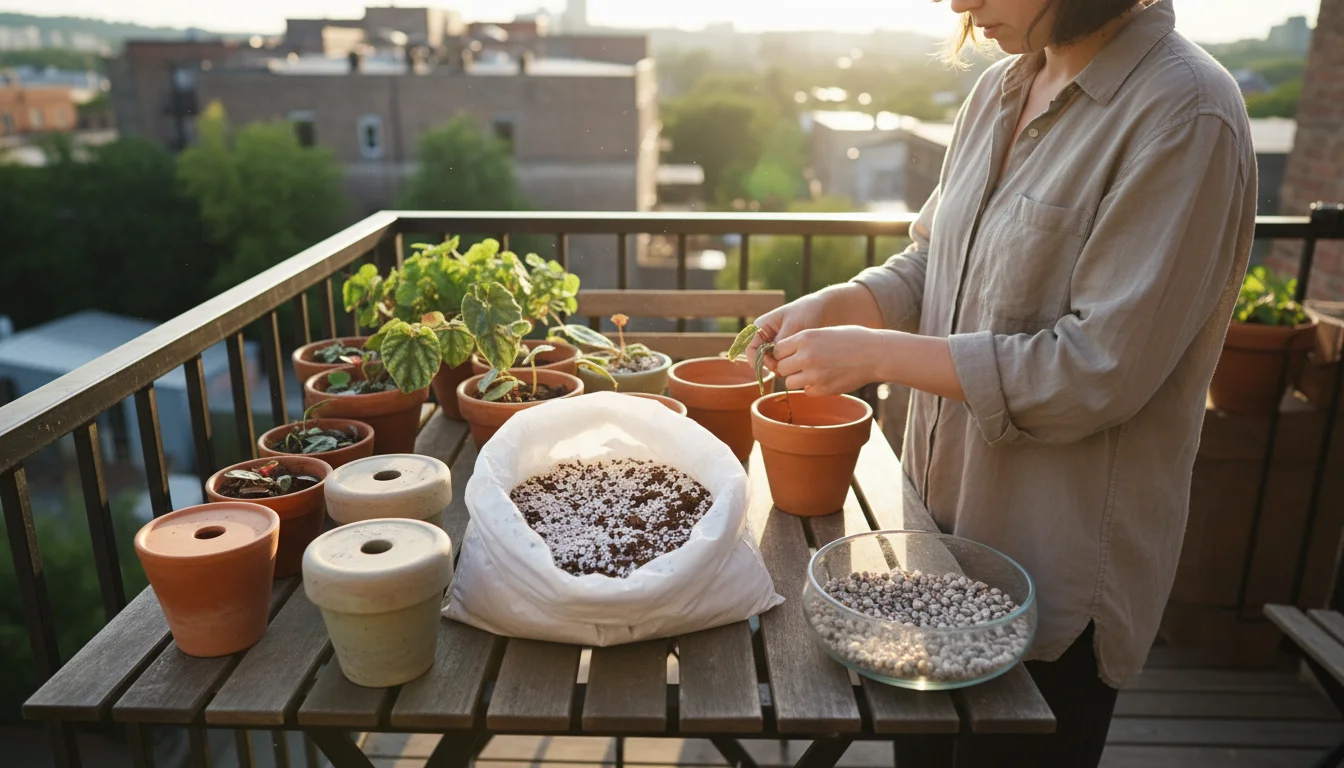
Drainage Explained
Excellent drainage is not optional; it is fundamental. Choose pots with drainage holes. A common myth suggests adding a layer of gravel or broken pot pieces at the bottom of the pot improves drainage. This actually creates a “perched water table,” where water accumulates just above the drainage layer, potentially leading to root rot. Instead, rely on a well-aerated potting mix and proper pot size for drainage.
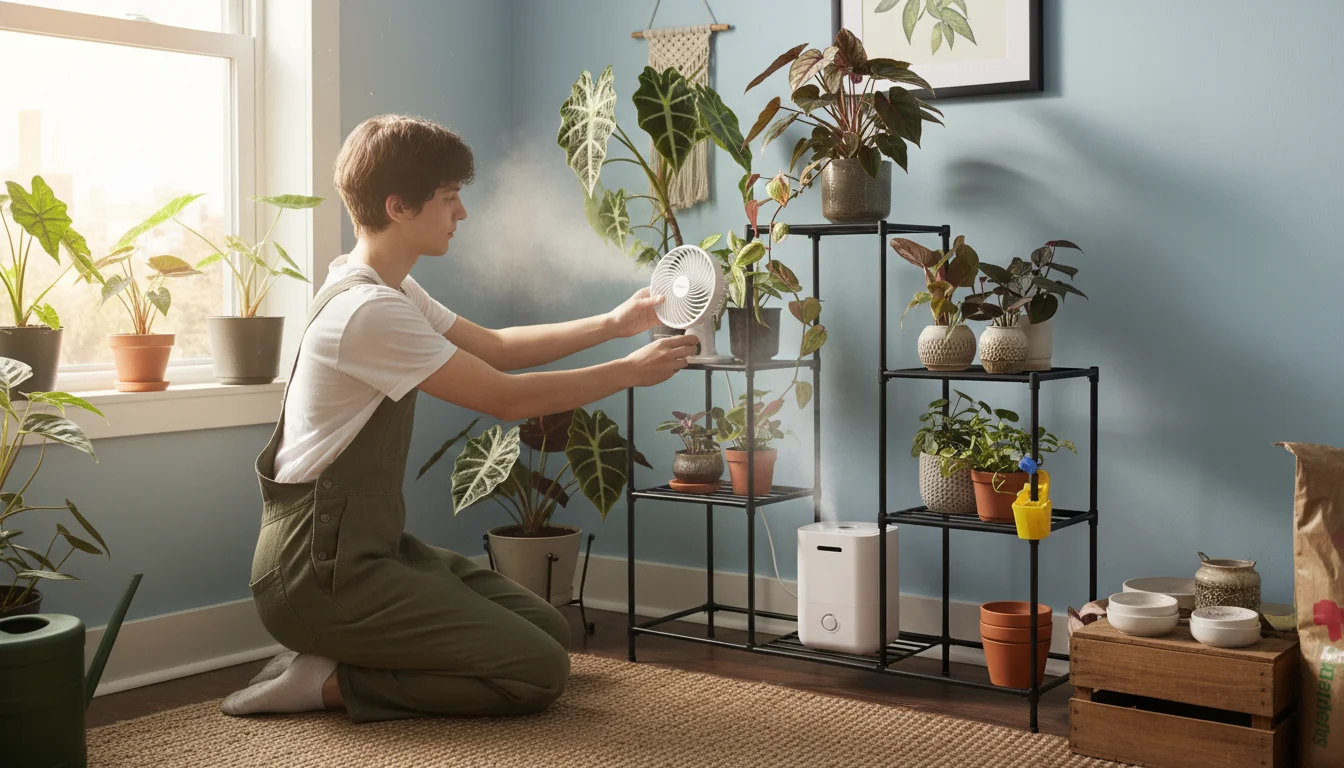
Humidity and Airflow: Critical for Exotics
Many rare houseplants originate from humid, tropical environments. Replicating these conditions in your home, especially a dry apartment, poses a challenge. Achieving the right balance of humidity and airflow is crucial for preventing leaf crisping, promoting robust growth, and warding off fungal issues.
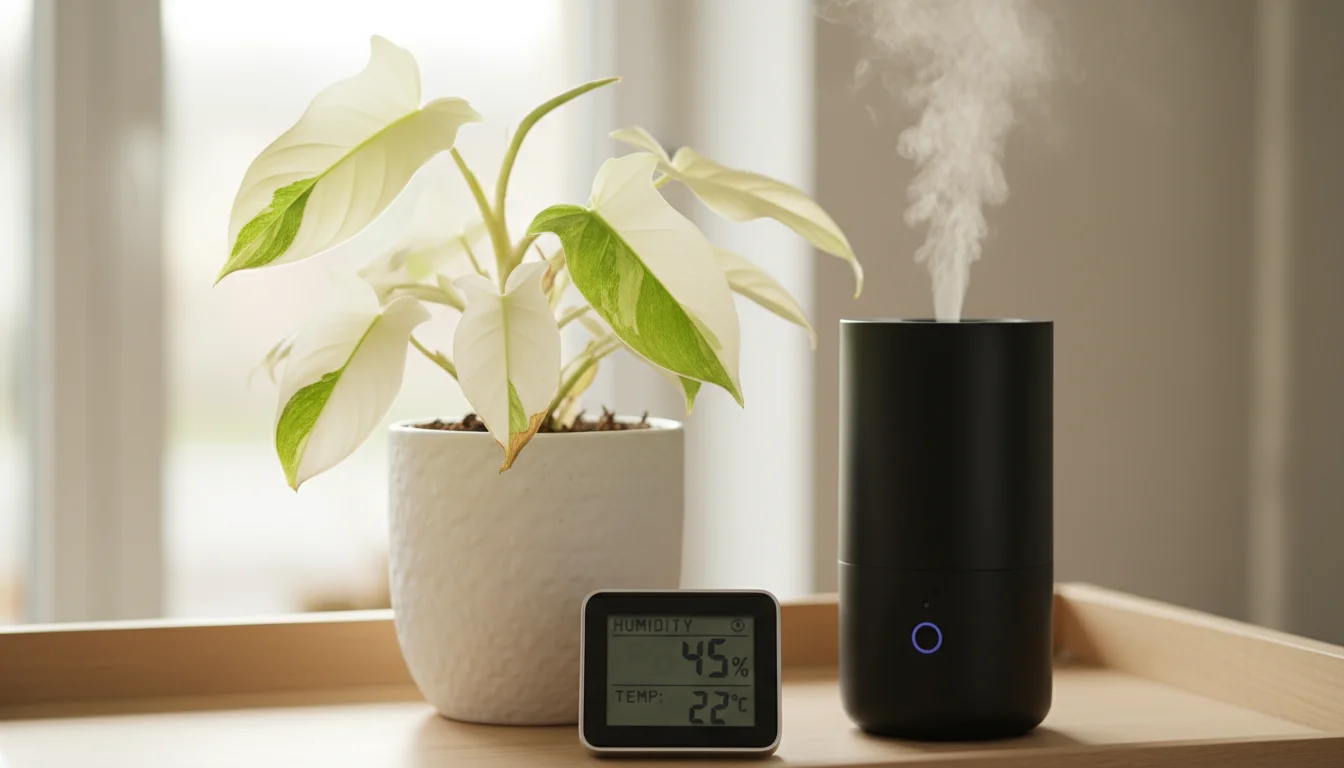
Understanding Humidity Requirements
Most tropical rare plants thrive in relative humidity levels between 60% and 80%. Your average home usually hovers between 30% and 50%, particularly in winter when heating systems dry the air. Low humidity manifests as crispy leaf edges, stunted new growth, or susceptibility to spider mites.
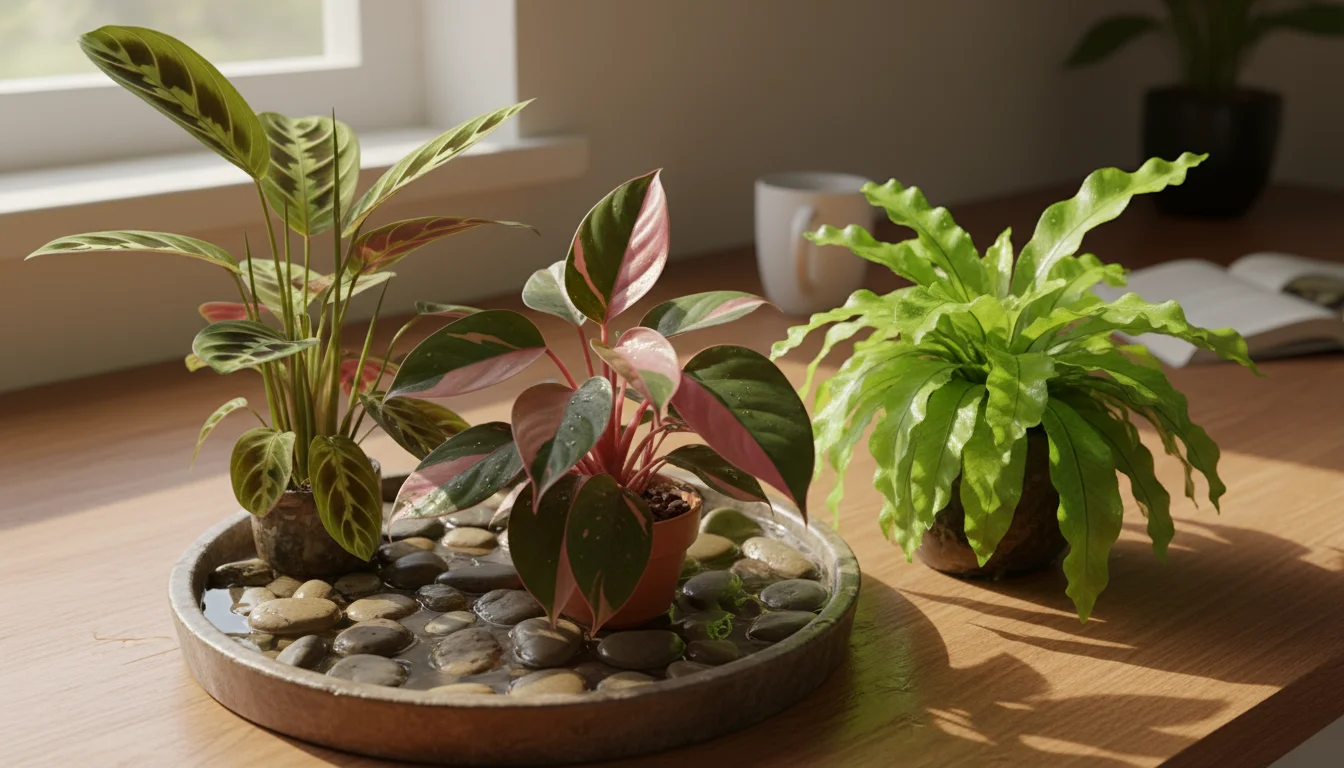
Practical Humidity Boosts Without Special Equipment
You do not need an expensive humidifier for every plant. Implement these simple, effective strategies:
- Pebble Trays: Fill a shallow tray with pebbles and water, ensuring the plant pot sits *on* the pebbles, not *in* the water. As the water evaporates, it increases humidity immediately around the plant. Regularly replenish the water.
- Grouping Plants: Plants naturally release moisture through transpiration. Grouping several plants together creates a localized microclimate with higher humidity. This is an efficient, space-saving strategy.
- Location in Your Home: Bathrooms and kitchens typically have higher ambient humidity due to water use. If you have suitable light, consider placing some humidity-loving rare plants in these rooms.
- Misting (with caution): While popular, misting offers only a temporary, superficial humidity boost. It evaporates quickly. If you choose to mist, use filtered or distilled water to avoid mineral deposits on leaves. Mist early in the day to allow leaves to dry, preventing fungal problems. For plants with velvety leaves (like some Anthuriums), avoid misting entirely, as water spots can damage them.
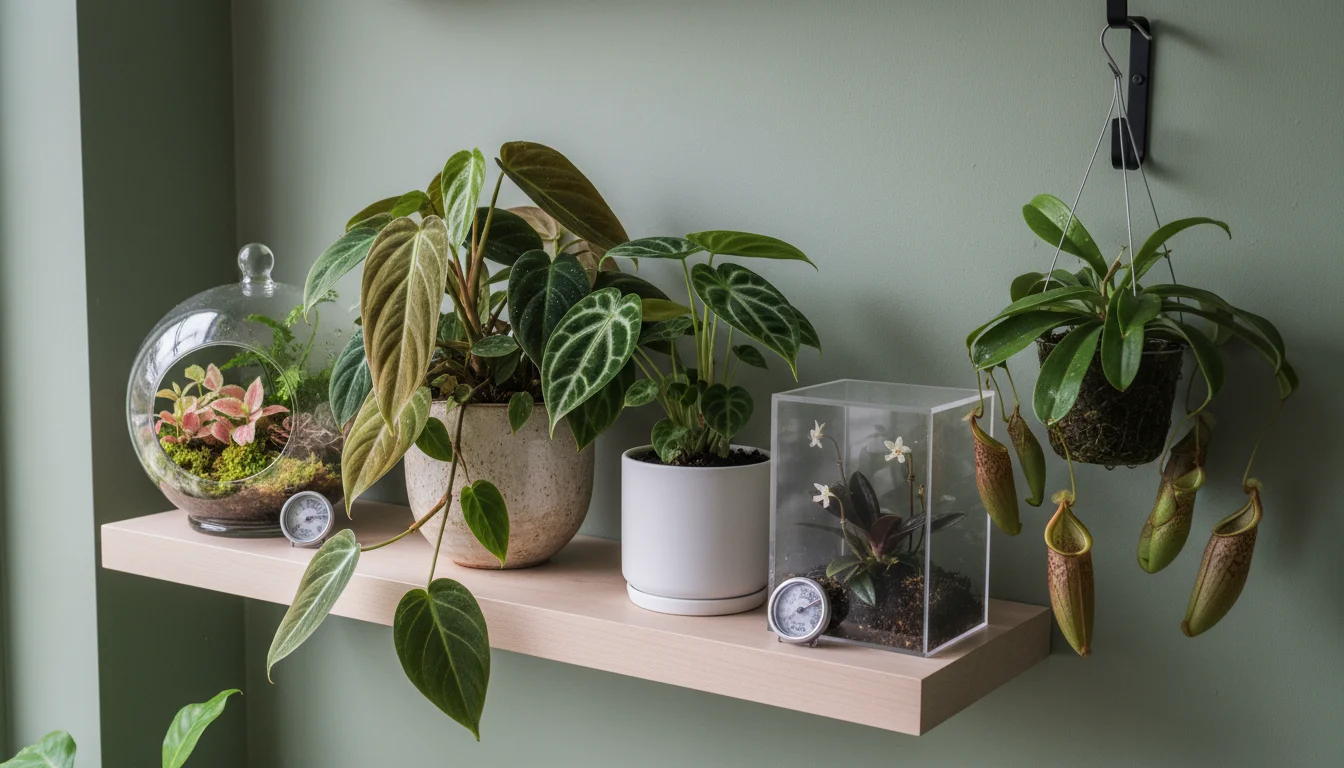
Terrariums and Humidity Domes
For your most delicate or high-humidity-loving rare plants, enclosed environments offer superior control:
- Closed Terrariums: Small, sealed glass containers create a self-sustaining humid ecosystem. Ideal for tiny plants that require extreme humidity and stable conditions. Ensure adequate drainage at the bottom.
- Glass Cabinets or Wardrobes: Repurposing an IKEA cabinet into a “plant cabinet” is a popular solution for collectors. You can install grow lights and small fans inside, creating a controlled, high-humidity environment for multiple plants.
- Cloches or Domes: Placing a clear glass or plastic cloche over a single plant temporarily boosts localized humidity. Remember to vent it periodically to allow for air exchange.
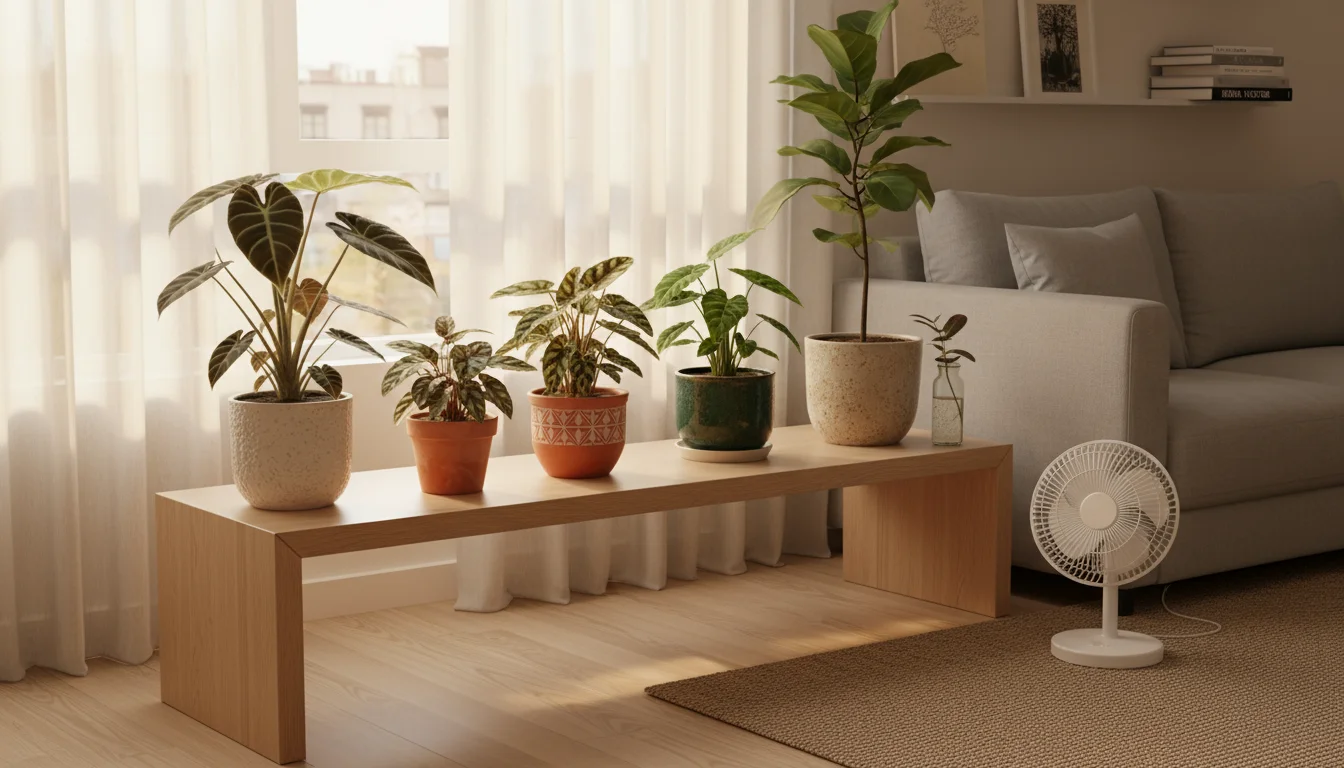
The Importance of Airflow
High humidity without good airflow is a recipe for disaster. Stagnant, moist air creates perfect conditions for fungal diseases (powdery mildew, botrytis) and bacterial infections. Good airflow prevents these issues and strengthens plant stems.
- Gentle Air Circulation: Open windows periodically (weather permitting) or use a small, oscillating fan on a low setting in your plant area. Position the fan so it creates a gentle breeze, not a direct gale.
- Spacing: Avoid overcrowding your rare plants. Ensure enough space between them for air to circulate freely around each plant.
Balancing high humidity with good airflow creates a thriving environment for your rare plants, minimizing risks while maximizing their potential for vibrant growth.
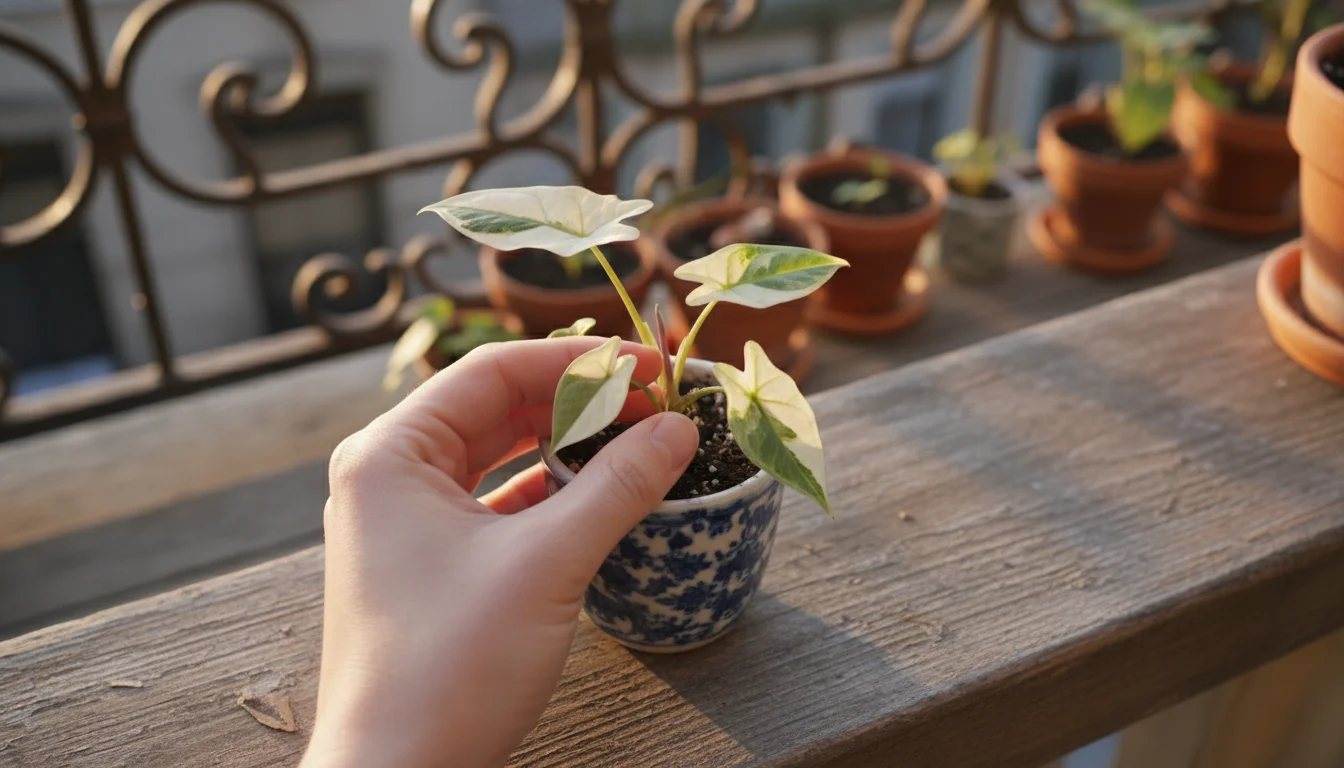
Troubleshooting and Pest Management for Precious Plants
Even the most experienced plant collectors encounter issues. For rare and often expensive specimens, early detection and swift, gentle intervention are paramount. Ignoring a problem can quickly lead to irreversible damage. You need to become a plant detective, understanding common symptoms and employing integrated pest management (IPM) basics.
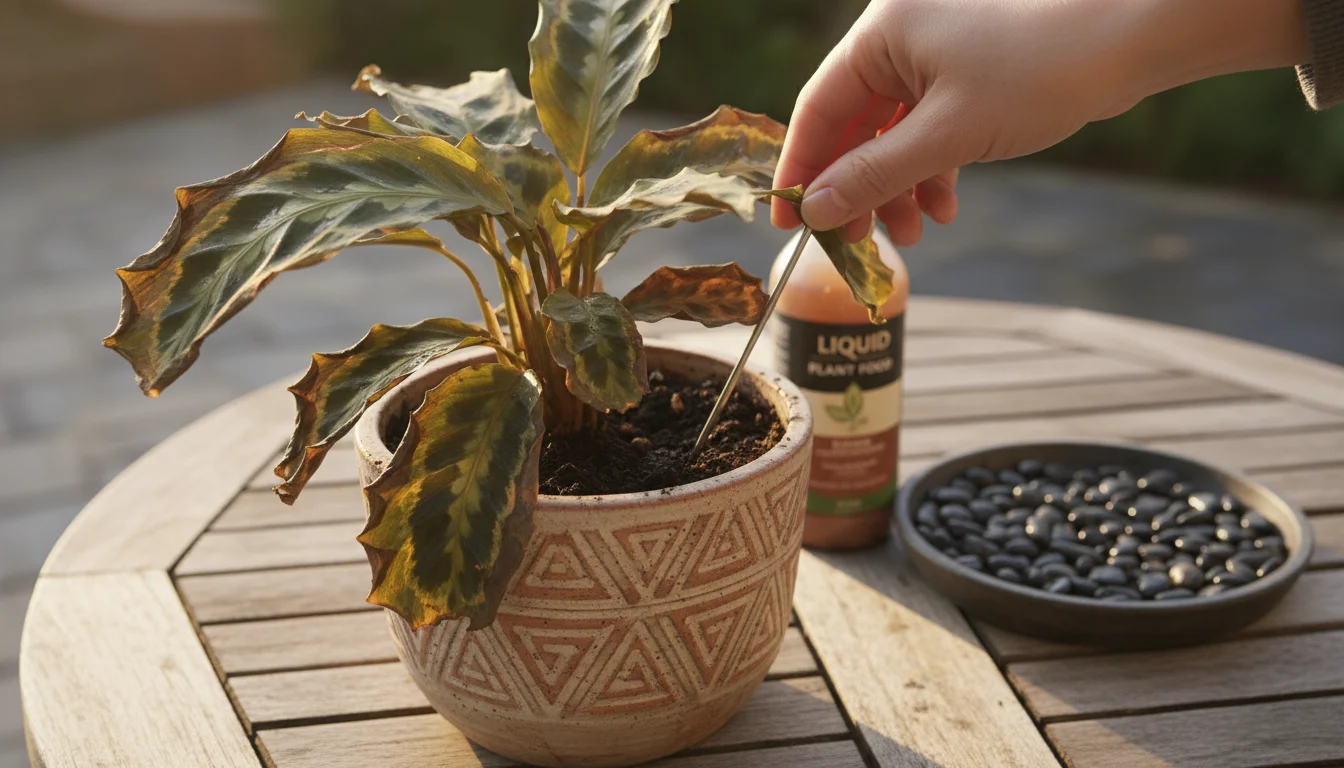
Common Plant Ailments and Their Causes
| Symptom | Possible Cause(s) | Actionable Insight |
|---|---|---|
| Yellowing Leaves (overall) | Overwatering, nutrient deficiency, natural aging, cold draft | Check soil moisture with finger test; ensure drainage. Consider a balanced liquid fertilizer if soil is dry and plant is active. |
| Yellowing Leaves (lower, older) | Natural aging, mild nutrient deficiency (nitrogen) | Normal process for older leaves. If excessive, check for root issues or consider feeding. |
| Brown, Crispy Leaf Edges | Low humidity, underwatering, mineral buildup (from tap water) | Increase humidity (pebble tray, grouping). Check soil moisture. Flush soil with distilled water periodically. |
| Mushy, Black Stems/Roots | Root rot (severe overwatering, poor drainage) | Unpot immediately. Trim all mushy, dark roots with sterile pruners. Repot in fresh, well-draining mix. Reduce watering frequency. |
| Drooping/Wilting Leaves | Underwatering, overwatering (root rot), transplant shock | Check soil moisture. If dry, water thoroughly. If wet, investigate for root rot. Provide stable conditions after repotting. |
| Small, Stunted New Growth | Insufficient light, nutrient deficiency, root-bound, pest infestation | Increase light intensity. Fertilize during growing season. Check for pests. Consider repotting. |
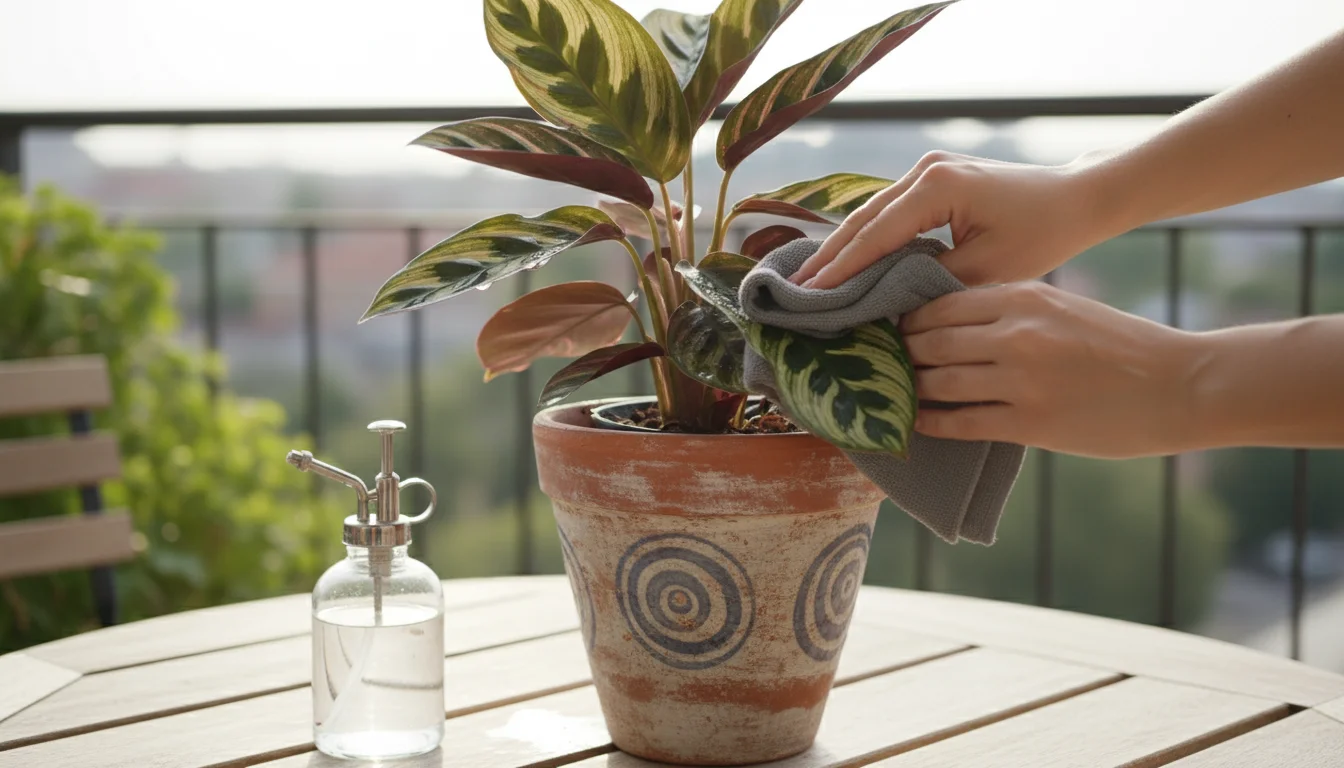
Integrated Pest Management (IPM) Basics for Rare Plants
IPM focuses on prevention and using the least toxic methods first. This approach is ideal for your valuable rare collection.
- Prevention is Key:
- Quarantine New Plants: As discussed, isolate all new arrivals for 2-4 weeks.
- Inspect Regularly: Make it a habit to examine your plants weekly. Check leaf tops and undersides, stems, and soil surface. Early detection prevents outbreaks.
- Maintain Optimal Conditions: Healthy plants resist pests better. Provide appropriate light, humidity, water, and air circulation. Stressed plants become pest magnets.
- Cleanliness: Remove fallen leaves and debris from the soil surface. Wipe down leaves periodically to remove dust and potential pest eggs.
- Identification: Accurately identify the pest. Common culprits include:
- Spider Mites: Tiny, create fine webbing, cause stippling on leaves. Thrive in dry conditions.
- Mealybugs: White, cottony masses in leaf axils and along stems.
- Aphids: Small, soft-bodied insects, often green or black, cluster on new growth.
- Thrips: Slender, tiny insects, cause silvery streaks and distorted new growth.
- Fungus Gnats: Annoying flying insects, larvae live in consistently wet soil.
- Scale: Small, brown, immobile bumps on stems and leaves.
- Treatment (Least Toxic First):
- Manual Removal: For small infestations, pick off pests by hand, use a cotton swab dipped in rubbing alcohol, or blast them off with a strong stream of water (for sturdy plants).
- Insecticidal Soap: An effective, low-toxicity option for many soft-bodied pests. Mix according to instructions. Spray thoroughly, ensuring coverage on leaf undersides. Repeat every 5-7 days for several weeks.
- Neem Oil: A natural pesticide that disrupts pest life cycles. Mix with water and a few drops of dish soap (as an emulsifier). Spray weekly. It also acts as a preventative.
- Horticultural Oil: Smothers pests. Use carefully, following instructions, as some plants are sensitive.
- Sticky Traps: Yellow sticky traps effectively catch adult flying insects like fungus gnats and thrips, helping to monitor pest populations.
- Biological Controls: For persistent issues, consider predatory mites for spider mites or beneficial nematodes for fungus gnat larvae. These are living organisms and require specific conditions.
- Isolate and Monitor: Always isolate infested plants to prevent spread. Continue monitoring after treatment to ensure pests are eradicated. It often takes several applications to break the pest life cycle.
Remember that a healthy plant is your best defense. By maintaining optimal conditions and regularly inspecting your rare collection, you significantly reduce the risk of major pest or disease outbreaks, allowing your beautiful plants to thrive.
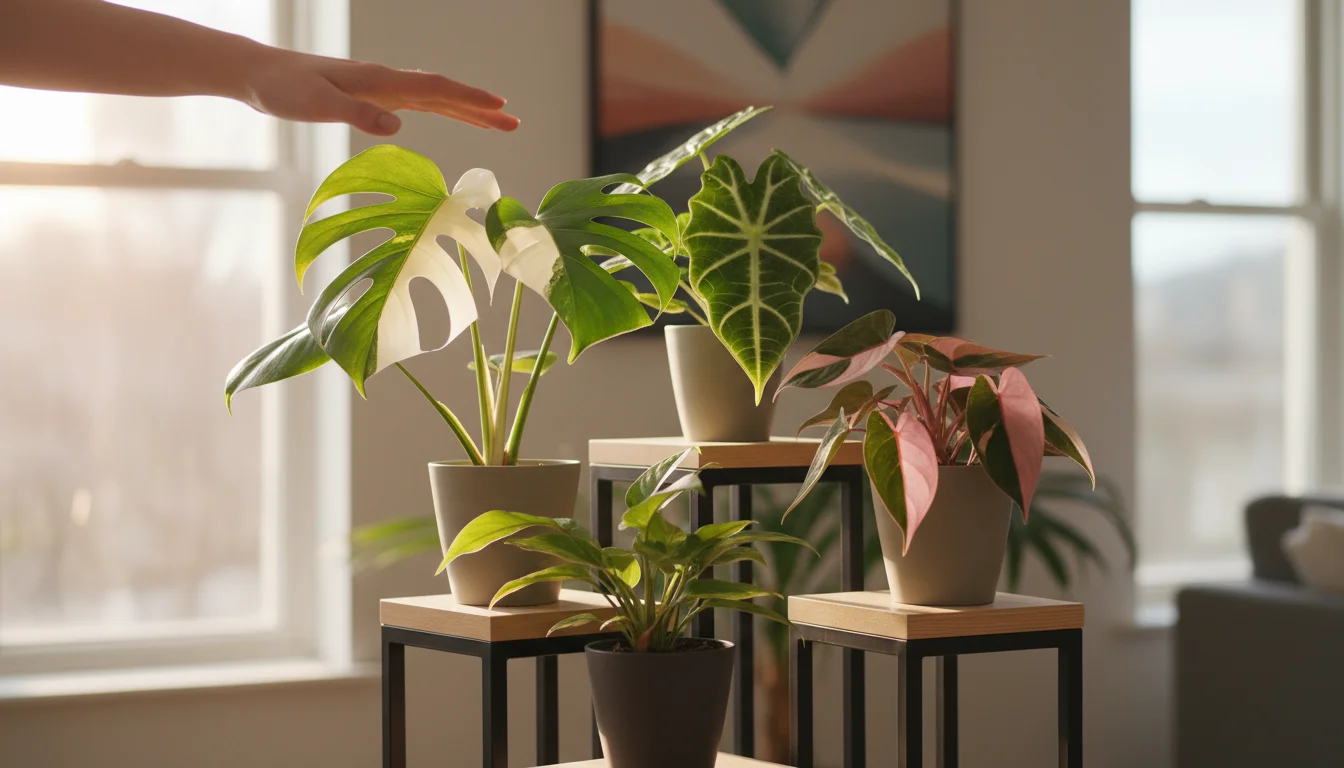
Top Rare Houseplants to Consider
Diving into the world of rare houseplants introduces you to an incredible diversity of forms, colors, and textures. While countless plants could earn the “rare” designation, a few stand out for their beauty, collectibility, and unique characteristics. Remember, “rare” can mean highly sought after due to aesthetics or truly limited in supply. Here are five exceptional exotic indoor plants worth considering for your collection, along with their general care quirks.
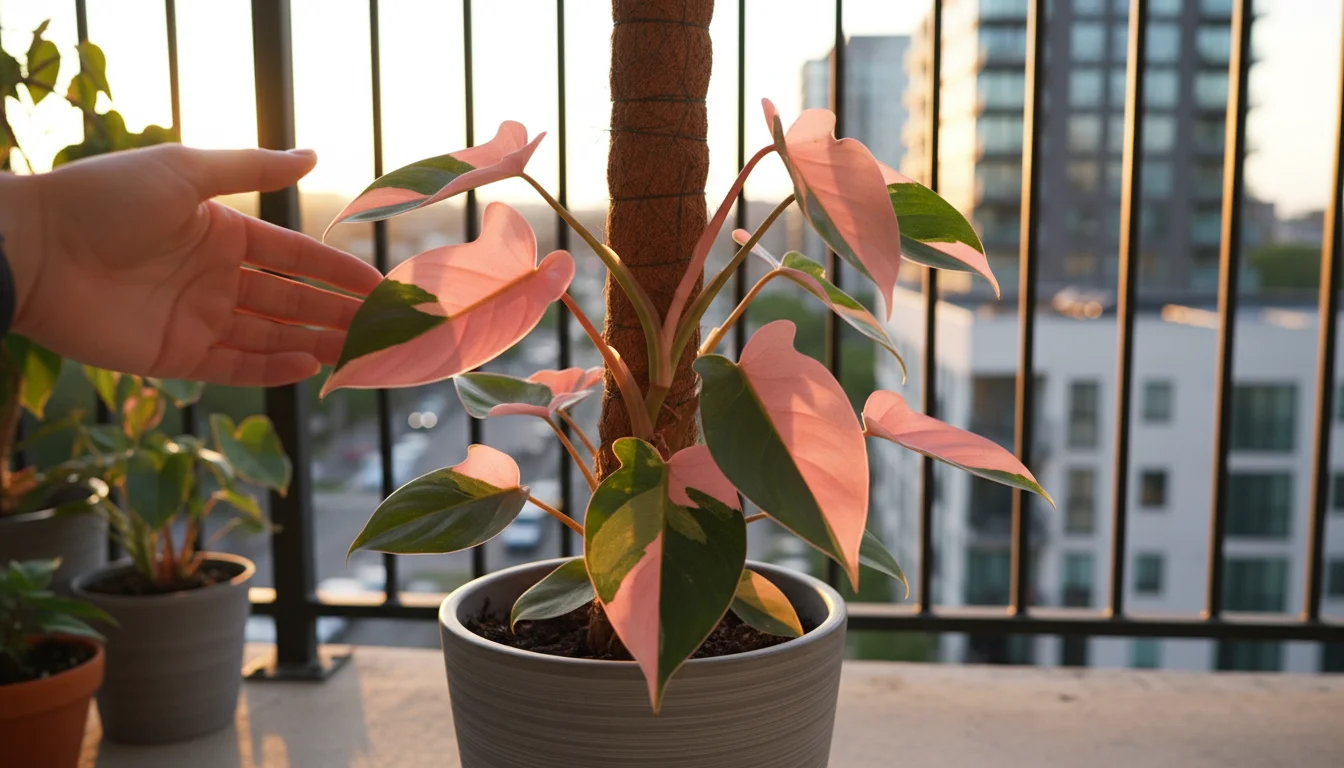
1. Philodendron ‘Pink Princess’ (Philodendron erubescens ‘Pink Princess’)
This striking aroid has captivated collectors with its dark green, heart-shaped leaves splashed with vibrant, bubblegum-pink variegation. Each leaf unfurls with a unique pattern, making every new growth a delightful surprise. The ‘Pink Princess’ truly lives up to its regal name.
- Unique Needs: The intensity of the pink variegation depends heavily on bright indirect light. Too little light results in less pink or even solid green leaves, while too much direct sun can scorch the delicate variegated parts. It appreciates consistent moisture, allowing the top inch of soil to dry between waterings, and thrives in high humidity (60-80%). Support it with a moss pole for larger leaves and aerial root attachment.
- Why Collect: Its iconic pink variegation offers a stunning contrast, making it a living piece of art. It also offers the rewarding challenge of maintaining its vibrant color.
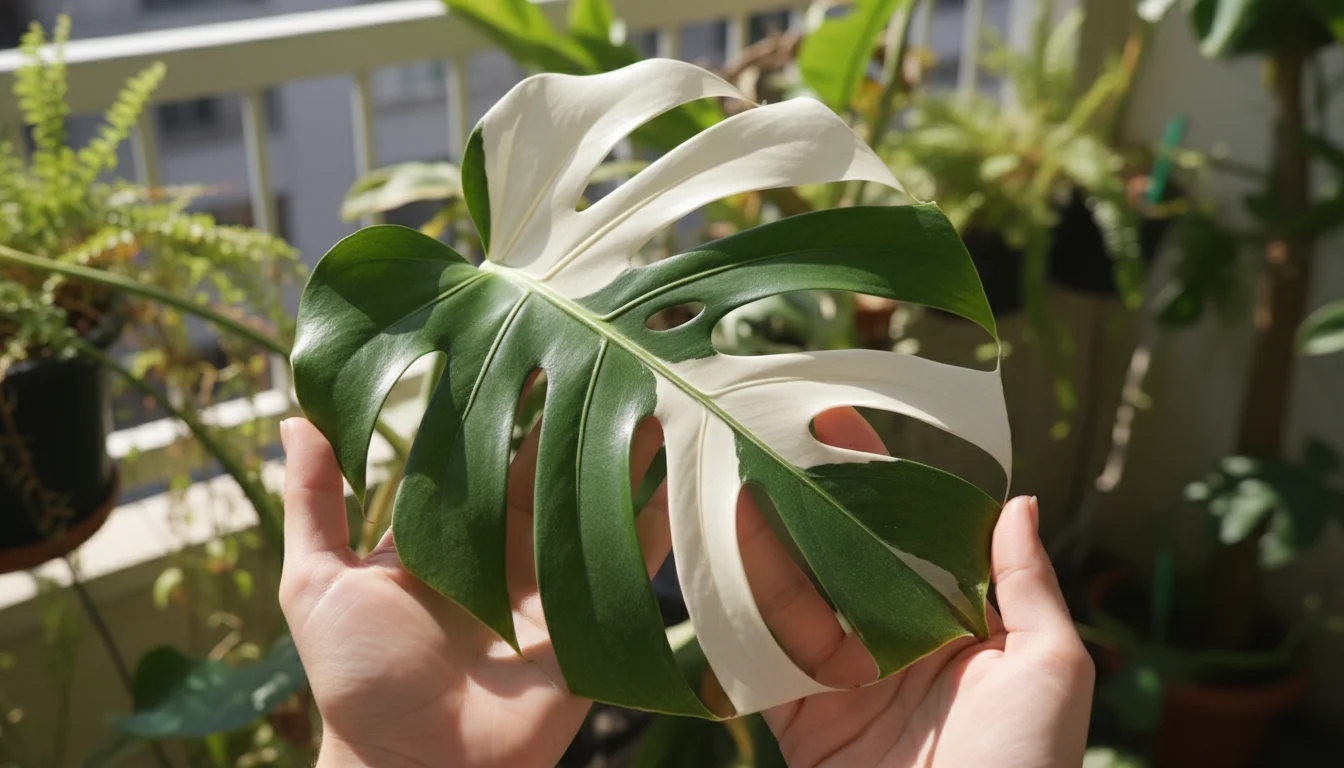
2. Monstera deliciosa ‘Albo Variegata’
The ‘Albo Variegata’ is arguably the queen of rare houseplants, renowned for its dramatic fenestrated leaves painted with large, stark white patches. These white sections contrast beautifully with the deep green, creating a mesmerizing marbled effect. Each leaf is truly unique, showcasing splashes, half-moons, or even entire sections of pure white.
- Unique Needs: This plant demands very bright indirect light. The white parts of the leaves lack chlorophyll, meaning they cannot photosynthesize. Insufficient light results in less variegation or smaller leaves. Overwatering is a common killer; allow the top 2-3 inches of its chunky, well-draining soil mix to dry out. High humidity (70%+) encourages healthy growth and larger fenestrations. Provide a sturdy support like a moss pole for upward growth.
- Why Collect: The ‘Albo’ offers unparalleled visual drama and a sense of prestige. Its classic Monstera fenestrations combined with brilliant white variegation create a timeless, iconic look.
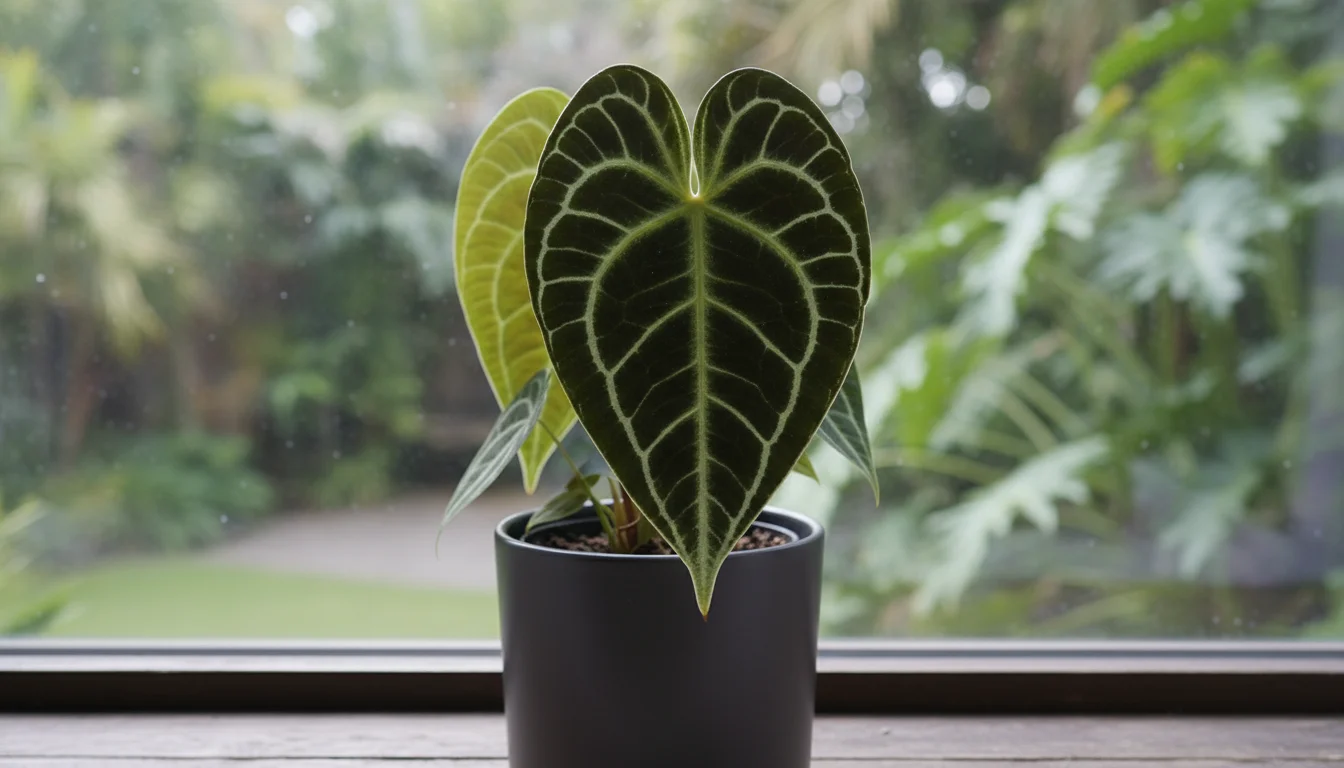
3. Anthurium clarinervium
Unlike its more common flowering relatives, Anthurium clarinervium is prized for its foliage. Its large, dark green, heart-shaped leaves boast thick, prominent silvery-white veins, giving them a velvety, almost embossed appearance. The texture alone makes this a highly desirable specimen.
- Unique Needs: This Anthurium needs very bright indirect light, but never direct sun which scorches its delicate leaves. It requires consistently moist, but never soggy, chunky aroid mix. High humidity (70%+) is essential to prevent crispy leaf edges, but misting is generally not recommended due to its velvety leaf texture which can develop spots. Ensure good airflow to prevent fungal issues.
- Why Collect: Its deeply textured, intricately veined foliage offers a sophisticated elegance that sets it apart. It adds a luxurious, sculptural element to any plant collection.
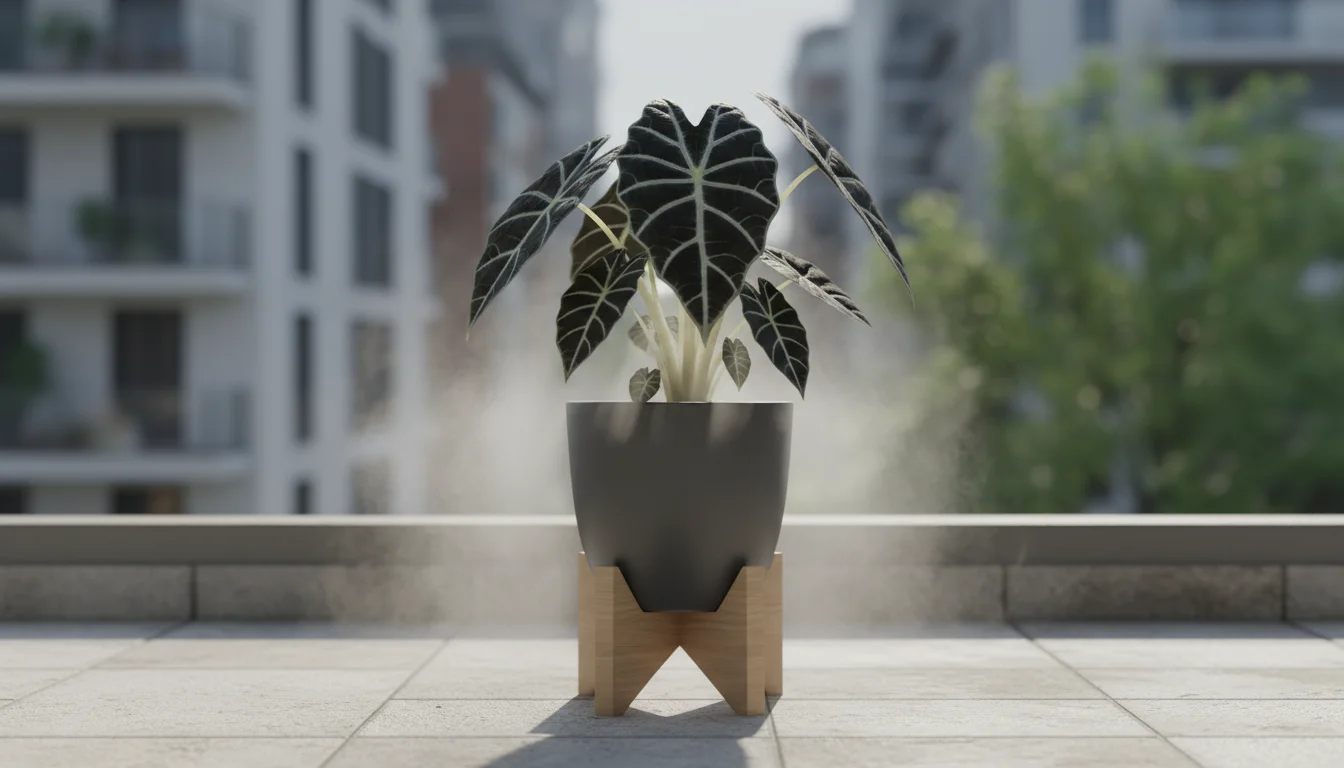
4. Alocasia ‘Frydek’ (Alocasia micholitziana ‘Frydek’)
Known as the Green Velvet Alocasia, ‘Frydek’ features velvety, deep green, arrow-shaped leaves with starkly contrasting, bright white veins. The leaves have a rich, luxurious feel and a dramatic appearance. It is a true showstopper for its striking texture and pattern.
- Unique Needs: ‘Frydek’ requires bright indirect light to maintain its vibrant coloration and encourage strong growth. It loves consistently moist soil, but also demands excellent drainage; never let it sit in standing water. High humidity (60-80%) is critical, otherwise, its leaf tips and edges crisp. This plant is prone to dormancy if conditions are not ideal or during winter, sometimes dropping all its leaves. Reduce watering significantly during dormancy. Watch for spider mites, a common pest for Alocasias.
- Why Collect: Its velvety texture and bold veining make it an incredibly tactile and visually arresting plant. It brings an exotic, jungle feel to your indoor space.
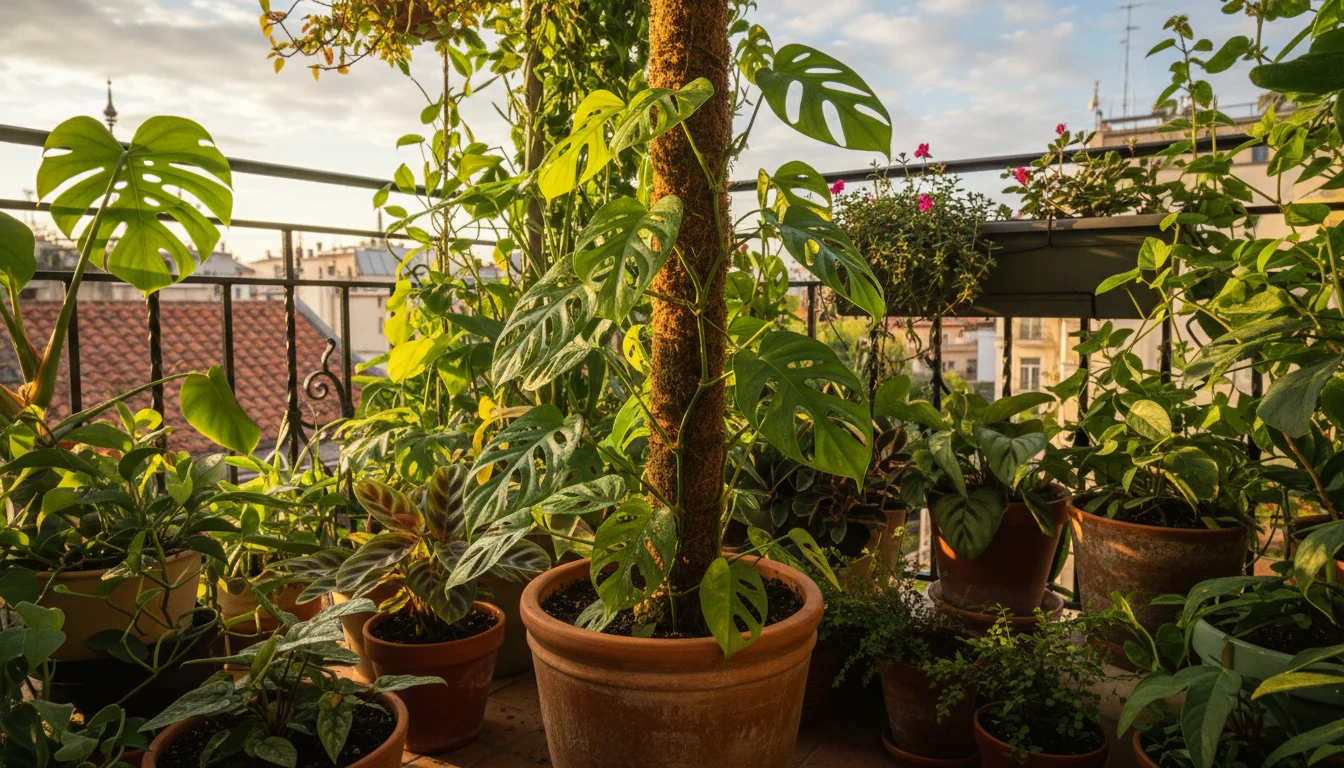
5. Rhaphidophora tetrasperma ‘Monstera Minima’ (often mislabeled)
While often called ‘Monstera Minima’ or ‘Mini Monstera,’ this plant is actually a species of Rhaphidophora. It boasts small, deeply lobed, bright green leaves that resemble a miniature Monstera deliciosa, making it incredibly popular for its compact vining habit and intricate foliage. It is a fast grower, quickly adding a lush, tropical vibe.
- Unique Needs: Provide bright indirect light to encourage its characteristic fenestrations and compact growth. It tolerates slightly lower humidity than some other rare aroids, but still appreciates 50%+ relative humidity. Allow the top inch of soil to dry before watering. As a vining plant, it benefits immensely from a moss pole or trellis for support, which also encourages larger leaves.
- Why Collect: Its rapid growth and miniature Monstera-like appearance make it an accessible entry into the world of rare-ish aroids. It is less demanding than some other rare plants, yet offers high visual impact.
Remember, each of these plants, while beautiful, requires dedication and specific environmental conditions. Do thorough research on individual care requirements before adding them to your collection. The joy of collecting comes from seeing these unique beauties thrive under your care.
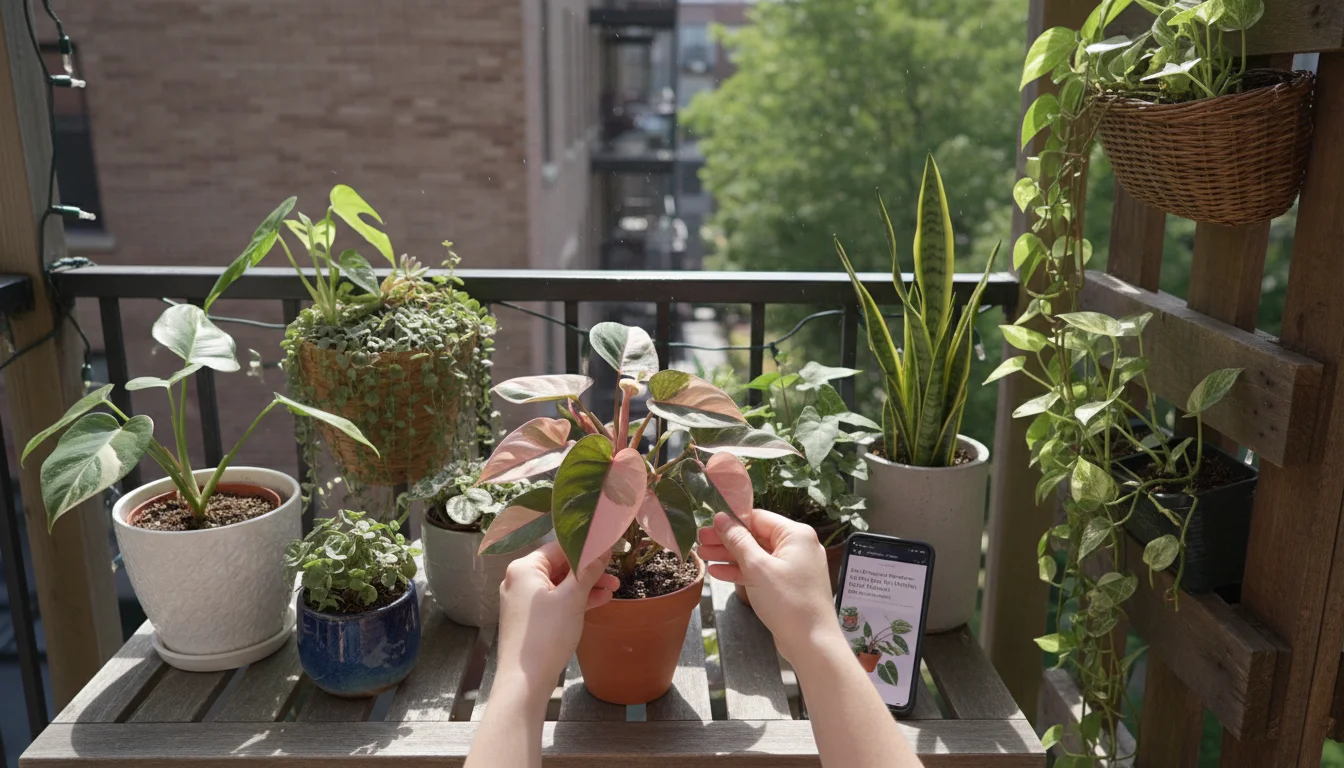
Frequently Asked Questions
What makes a houseplant “rare” versus just uncommon?
Rarity typically stems from several factors, including limited natural habitats, slow growth or propagation rates, or being a specific, less common cultivar. An uncommon plant might just be less popular or harder to find in general nurseries, but easily propagated. Truly rare plants often have restricted availability due to botanical or horticultural challenges, not simply market demand. For example, a plant requiring specific laboratory tissue culture to propagate in large numbers is genuinely rarer than a plant that is simply “trendy.”
Are rare houseplants harder to care for than common ones?
Generally, yes. Many rare houseplants are niche species that originate from very specific, stable environments, like rainforest understories. They often have tighter tolerances for light, humidity, and watering. They tend to be less forgiving of mistakes or fluctuations in environmental conditions compared to robust, common houseplants like Pothos or ZZ plants. You need to provide more precise care to help them thrive.
Can I propagate rare houseplants to increase my collection or share?
Absolutely, propagating rare houseplants is a rewarding part of the hobby. Many aroids, for instance, propagate well from stem cuttings with nodes, often rooting in water, sphagnum moss, or perlite. Some rare plants, however, are notoriously difficult to root and may require advanced techniques or specific conditions. Always research the best propagation method for your specific plant. Sharing cuttings within the plant community is a wonderful way to expand your and others’ collections sustainably.
What should I do if my rare houseplant starts to decline?
Act quickly and systematically. First, review the plant’s care: light, water, humidity, and temperature. Is anything significantly different or suboptimal? Next, thoroughly inspect for pests, especially on leaf undersides and new growth. Check the soil for signs of root rot (mushy, smelly roots) or extreme dryness. Sometimes, a change in environment (moving it to a brighter spot or increasing humidity) or a gentle repot into fresh, well-draining soil can revive it. Isolate the declining plant immediately to protect others in your collection.
Is it ethical to buy rare houseplants, especially if they are expensive?
Ethical sourcing is crucial. You should only purchase rare houseplants from reputable growers and nurseries that propagate their plants responsibly, either from established mother plants or through tissue culture. Avoid any seller that hints at wild-collected plants, as this contributes to habitat destruction and illegal trade. An expensive price tag does not inherently mean unethical sourcing; it often reflects propagation difficulty, slow growth, or high demand. Prioritize transparency from your seller regarding the plant’s origin. Your choices support either sustainable practices or harmful ones.
For research-based houseplant care, visit
Oregon State Extension — Gardening,
Brooklyn Botanic Garden,
New York Botanical Garden and
Royal Horticultural Society (RHS).
Disclaimer: This article is for informational purposes only and is not a substitute for professional advice. Consult local extension services for region-specific recommendations.
